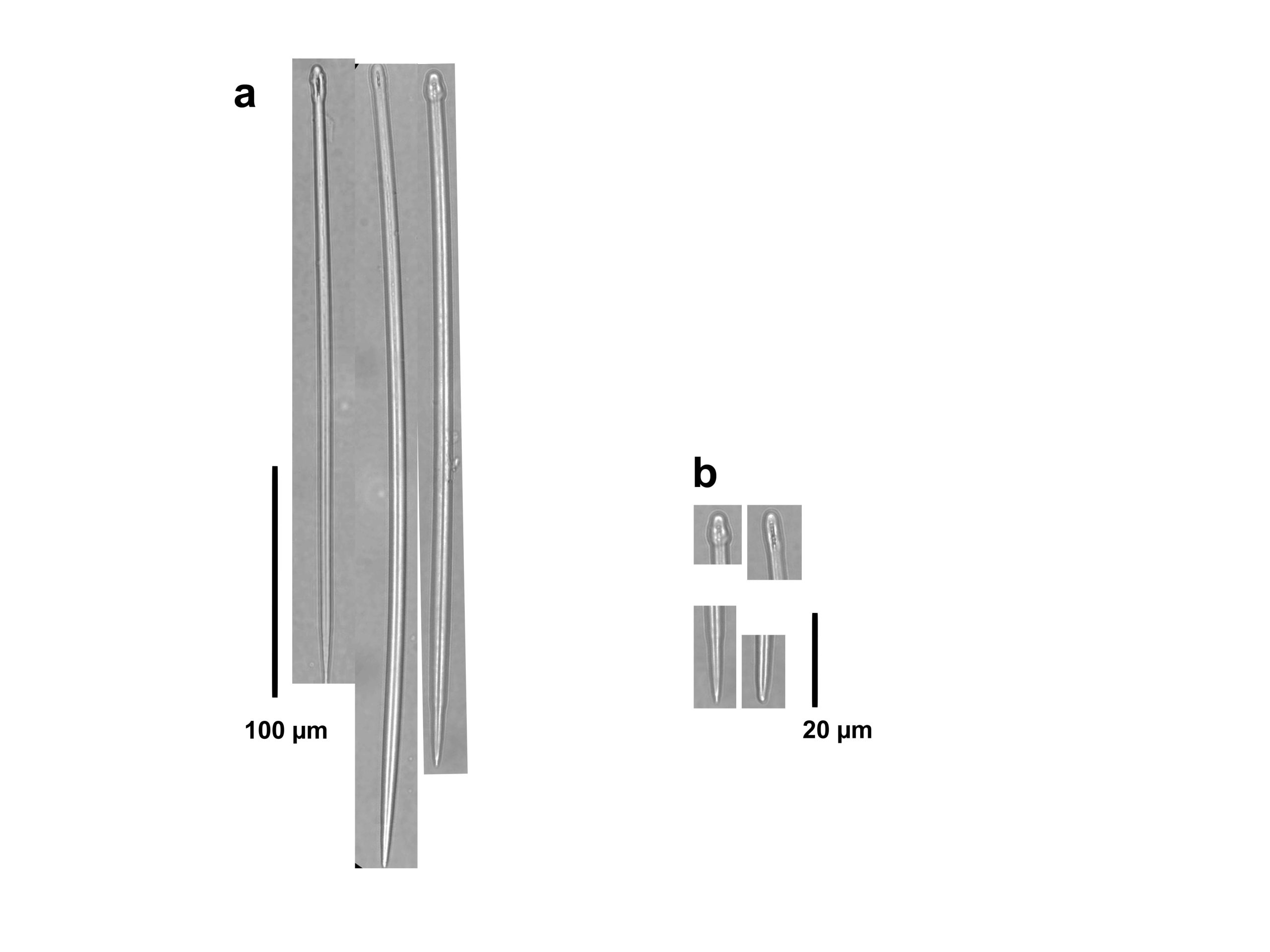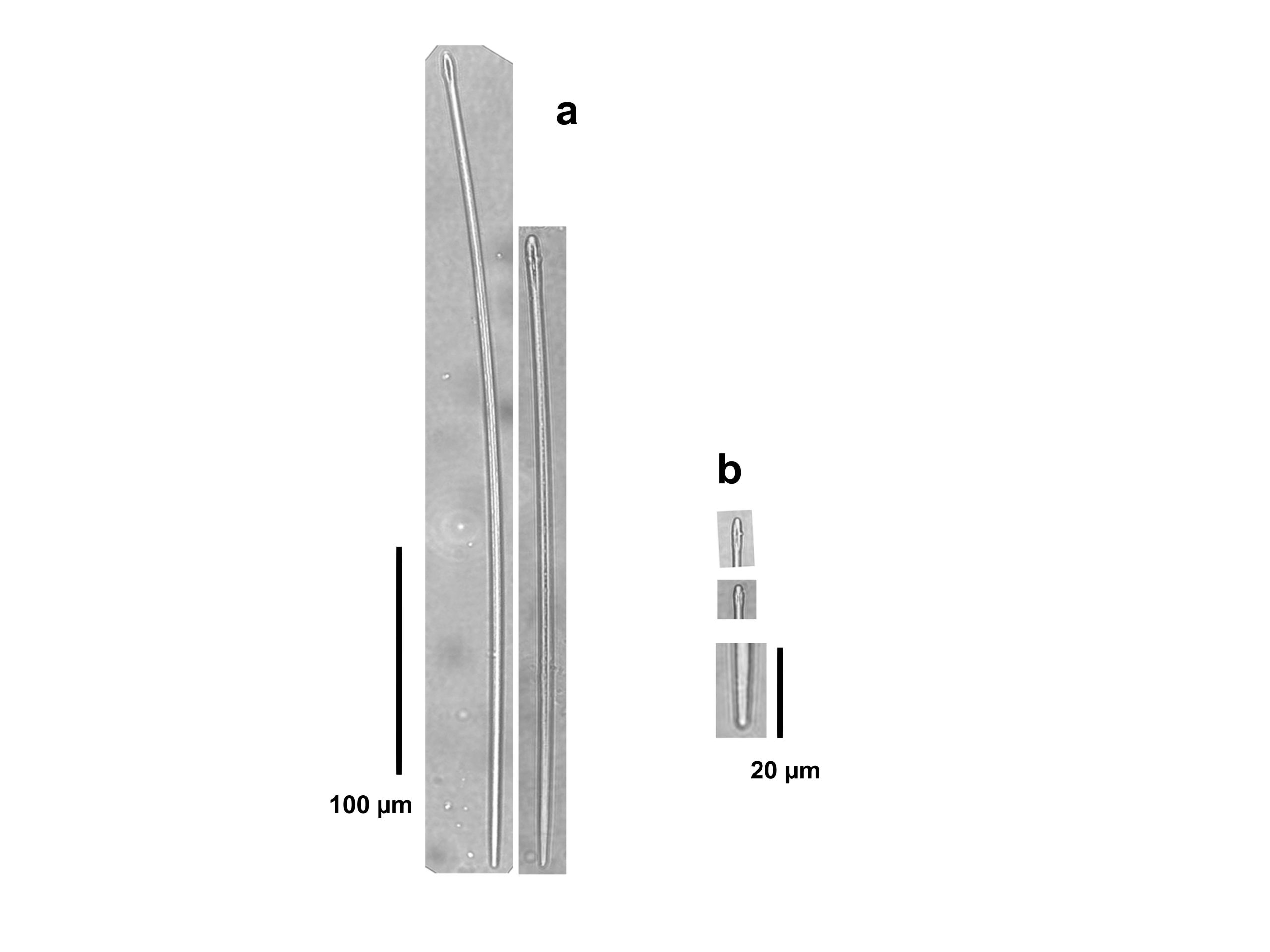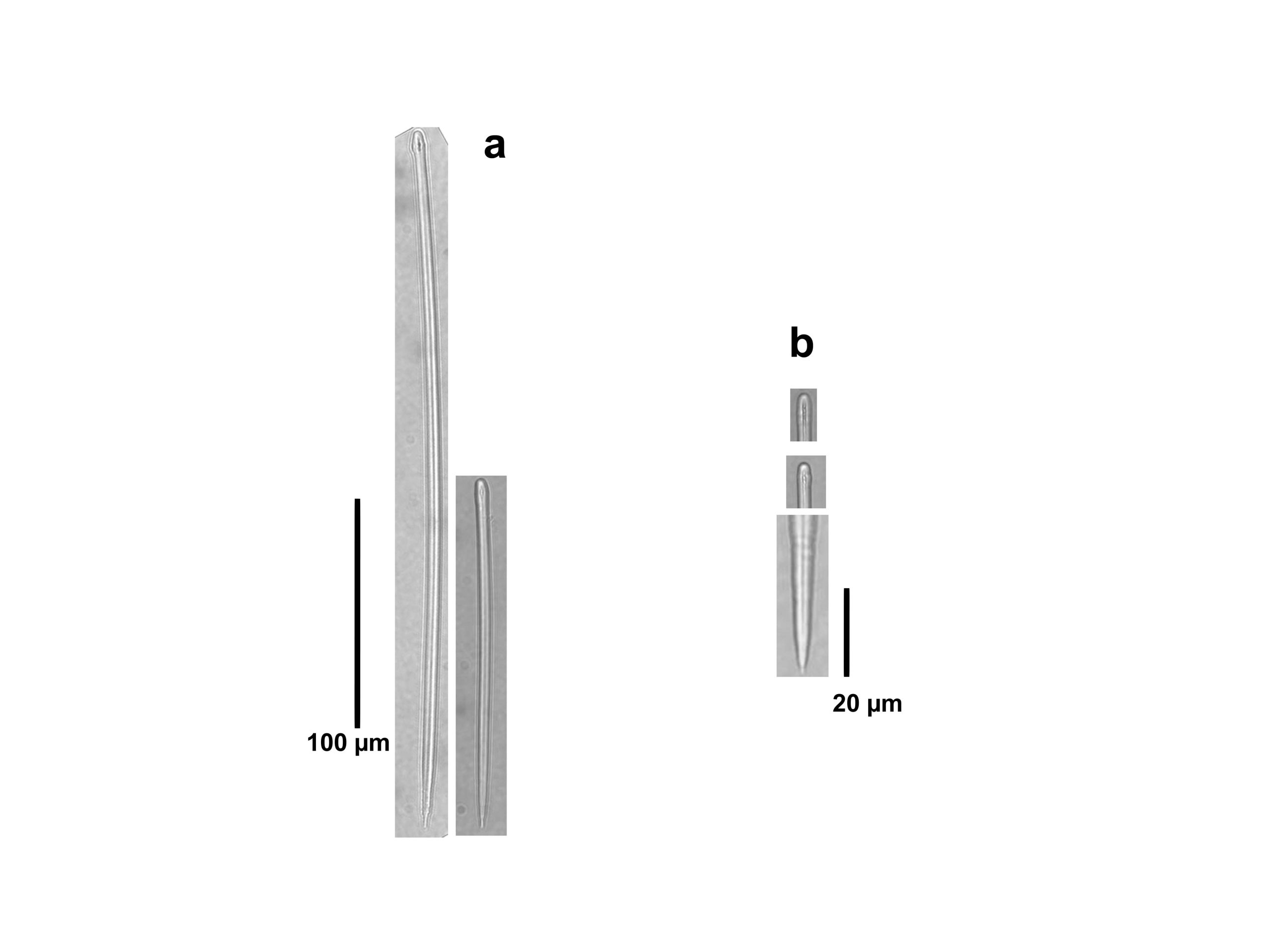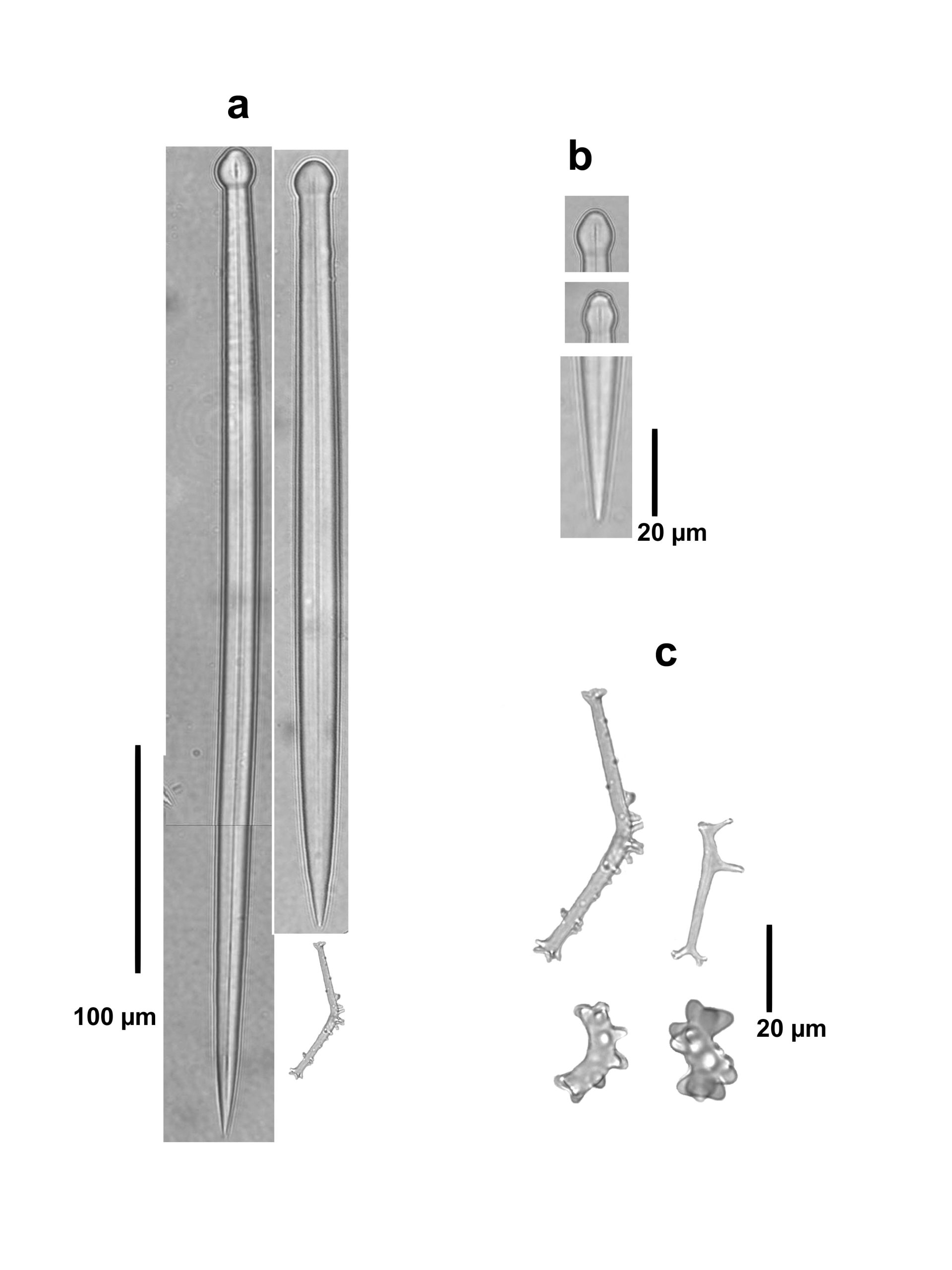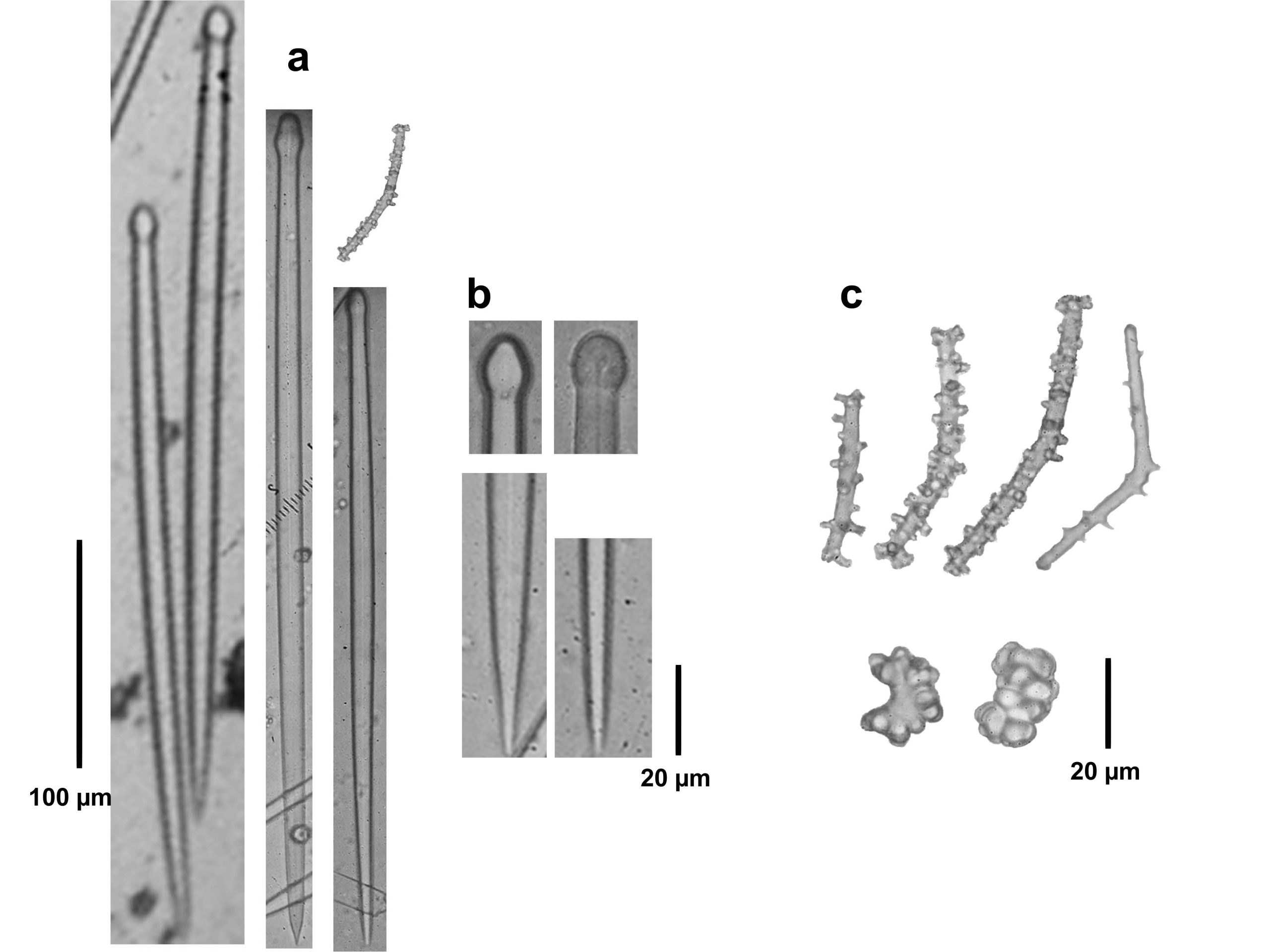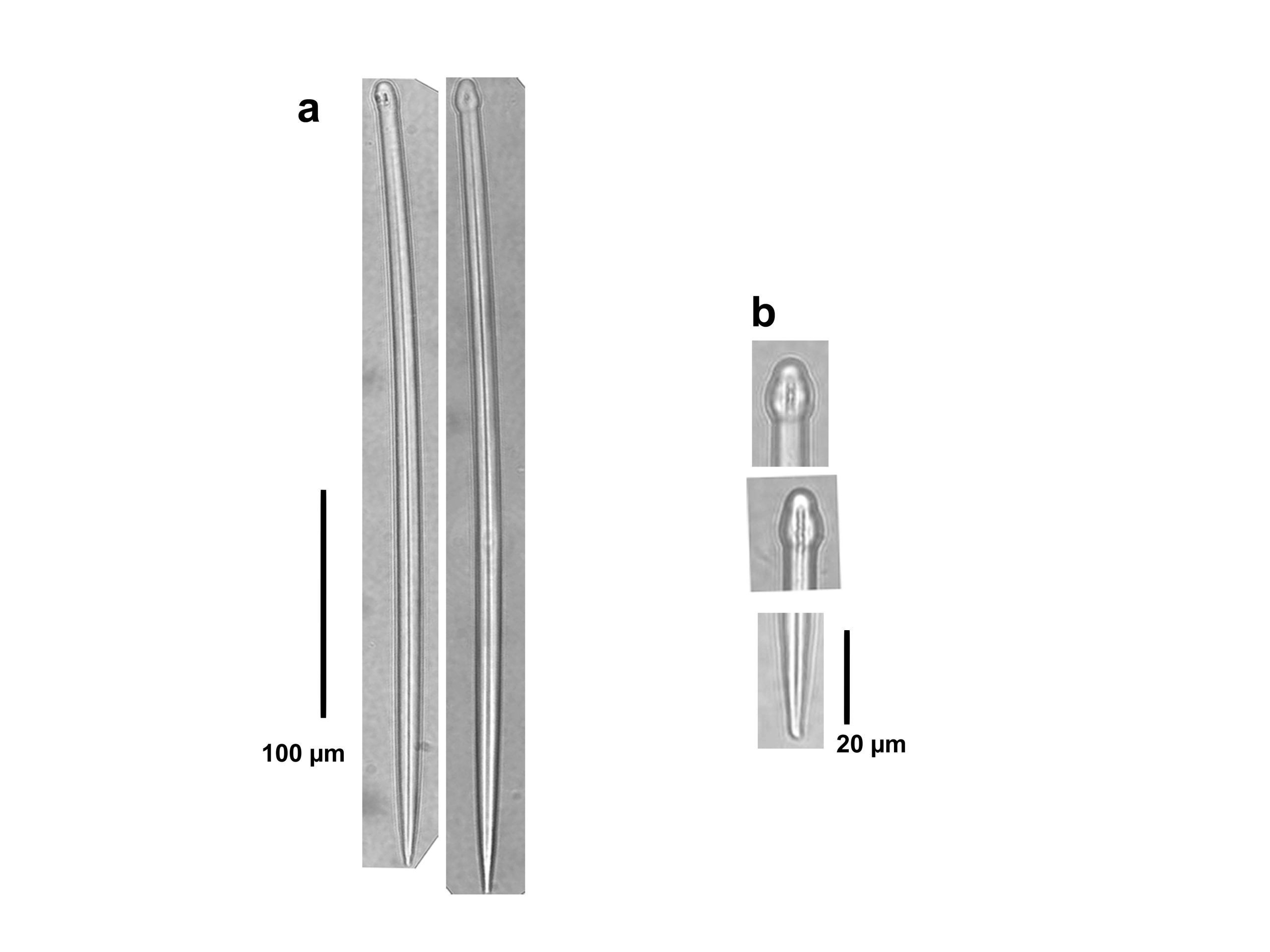Observed Characteristics:
Color:
- red
- orange
- yellow
- green
Morphology:
- encrusting
- papillated
Consistency:
- soft
- tough
Sample Locations:
- Bahamas
- United States
- Colombia
- Venezuela
- Panama
- Jamaica
Cliothosa delitrix
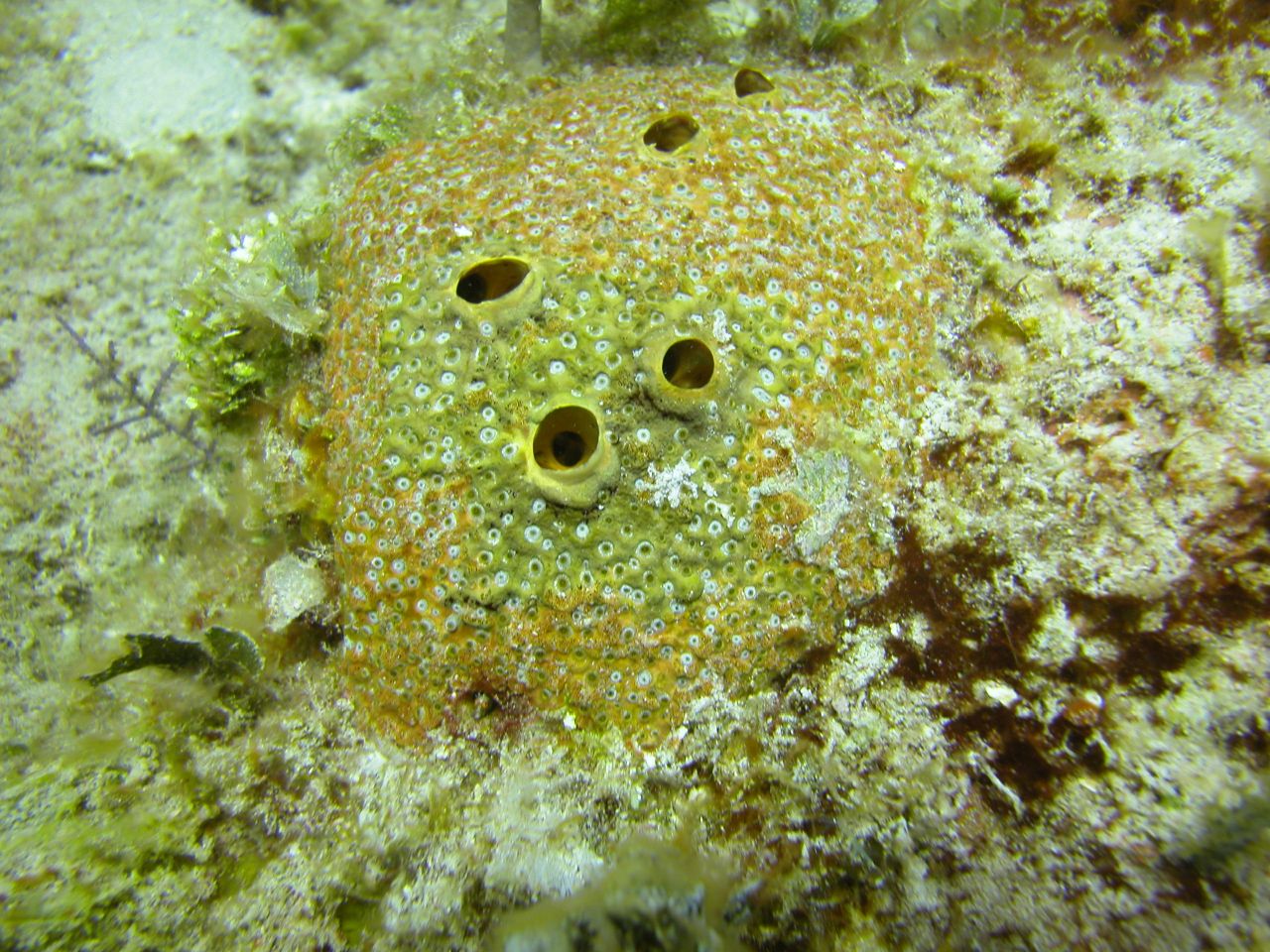
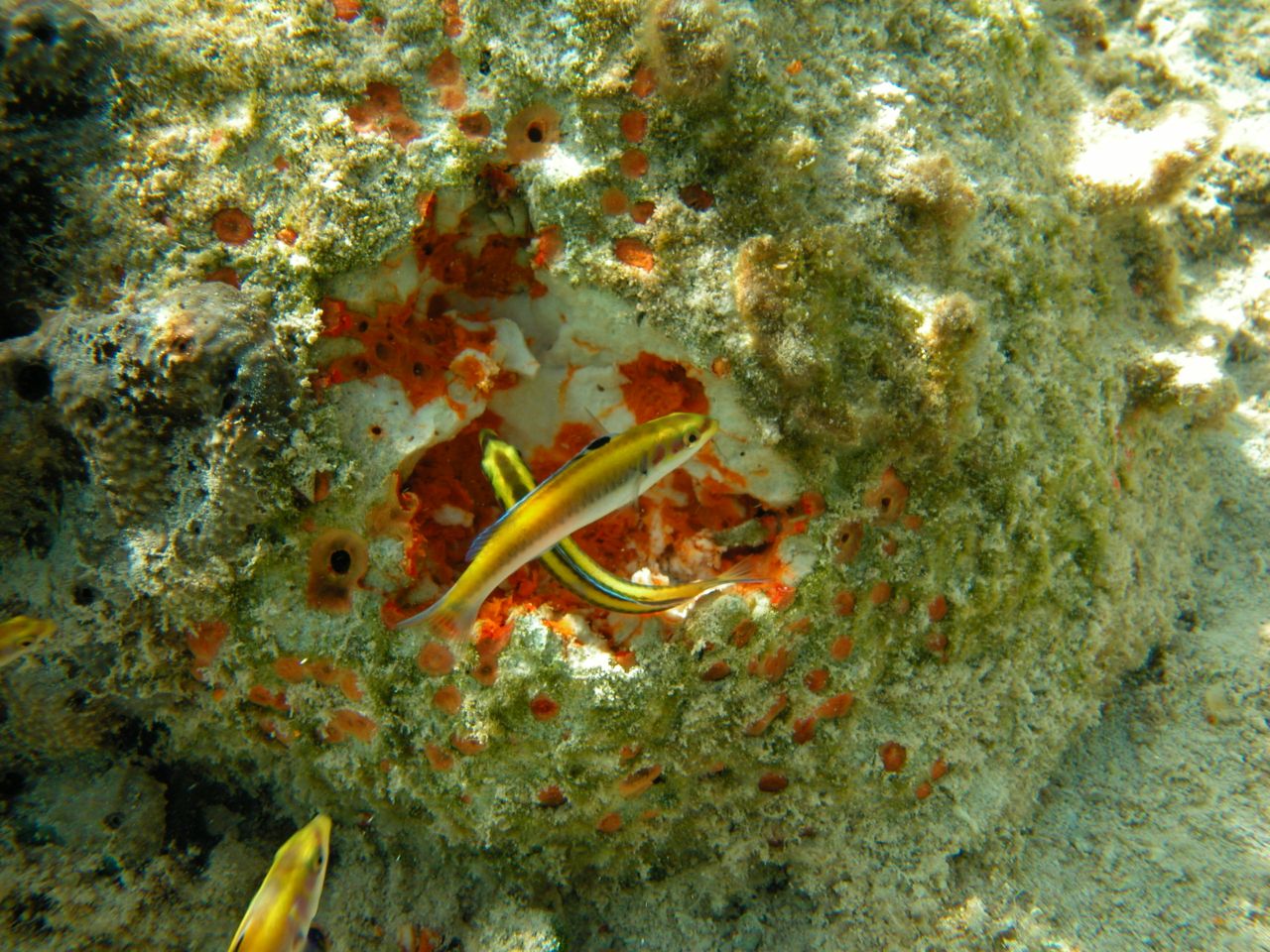
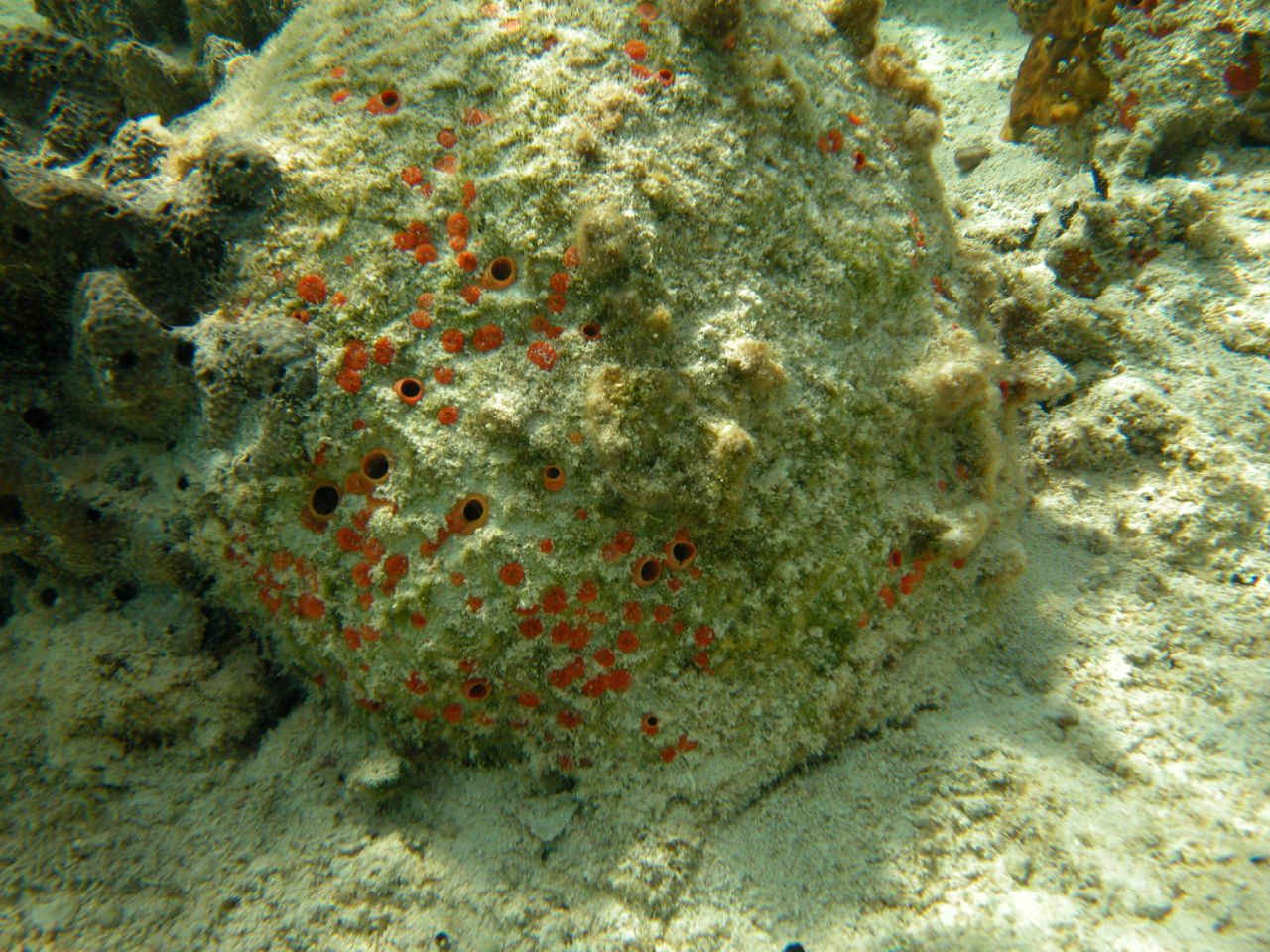
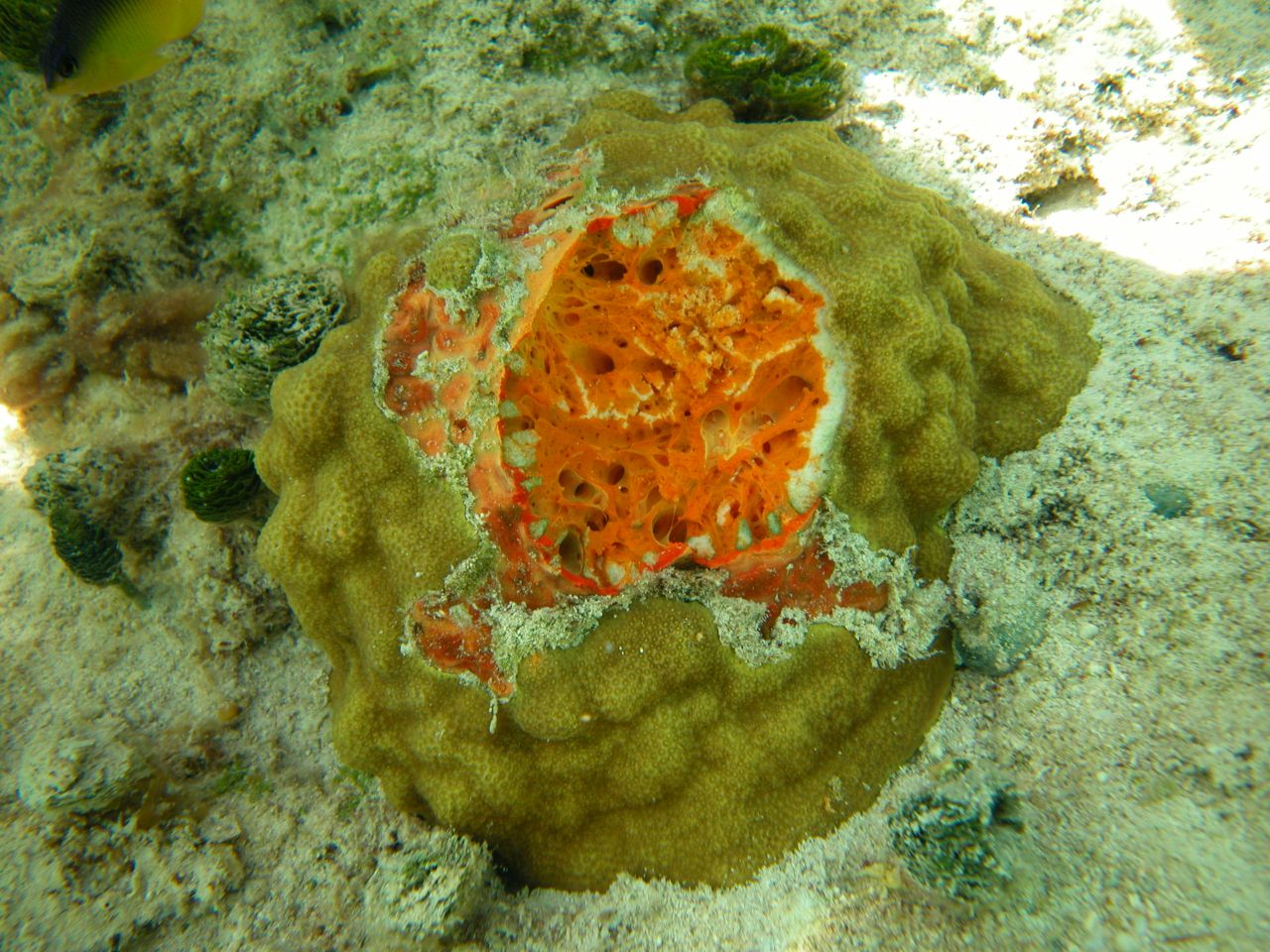
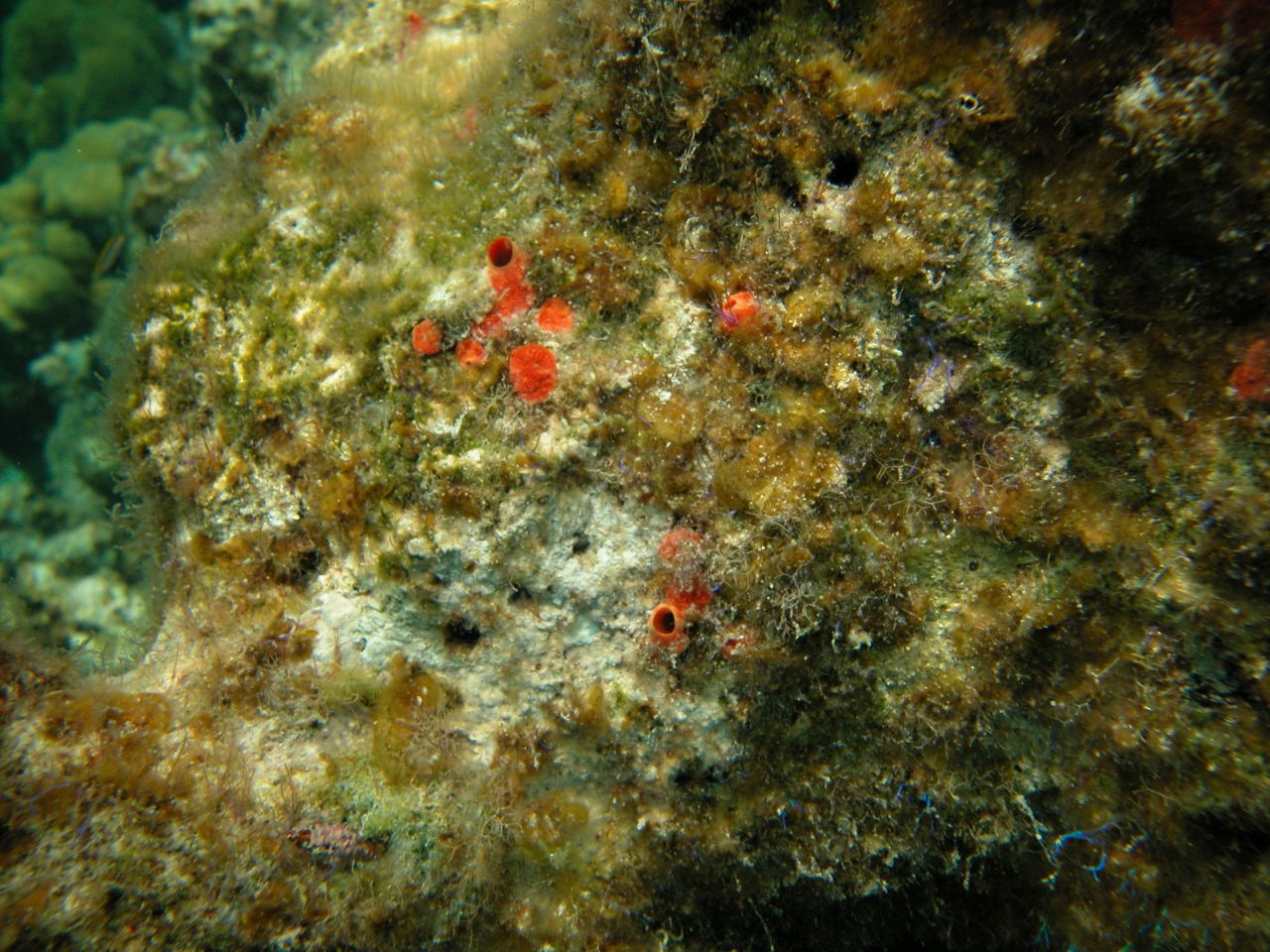
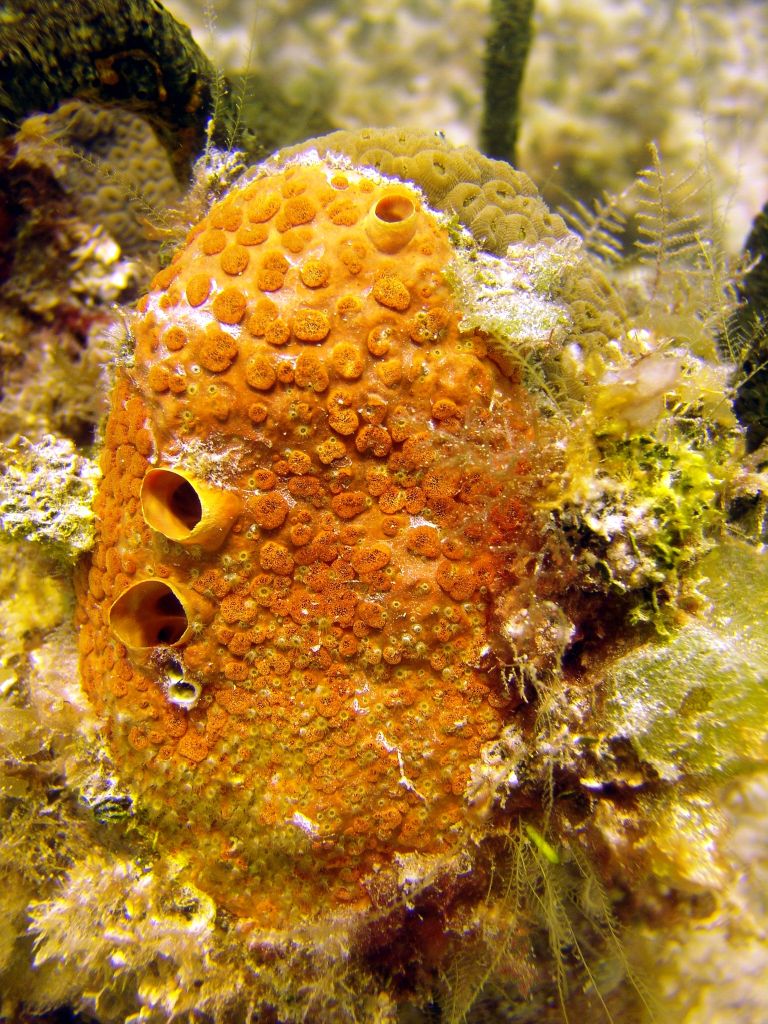
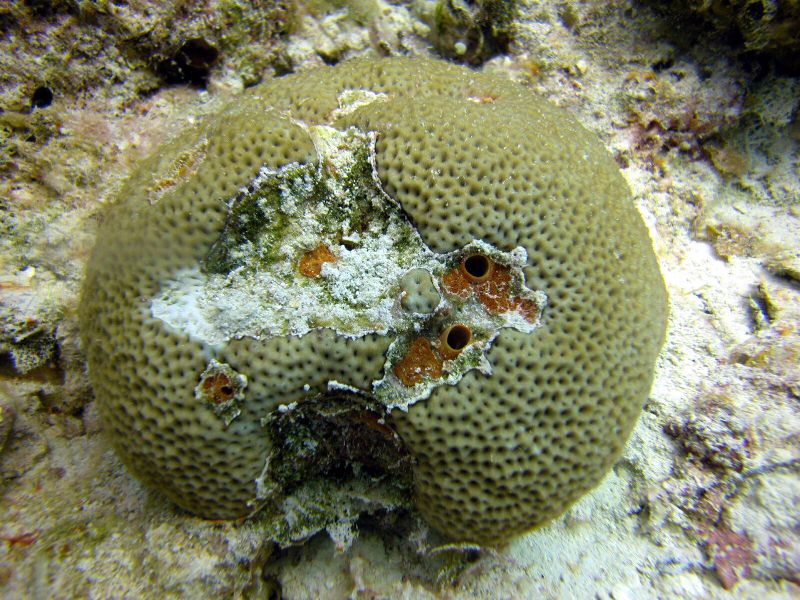

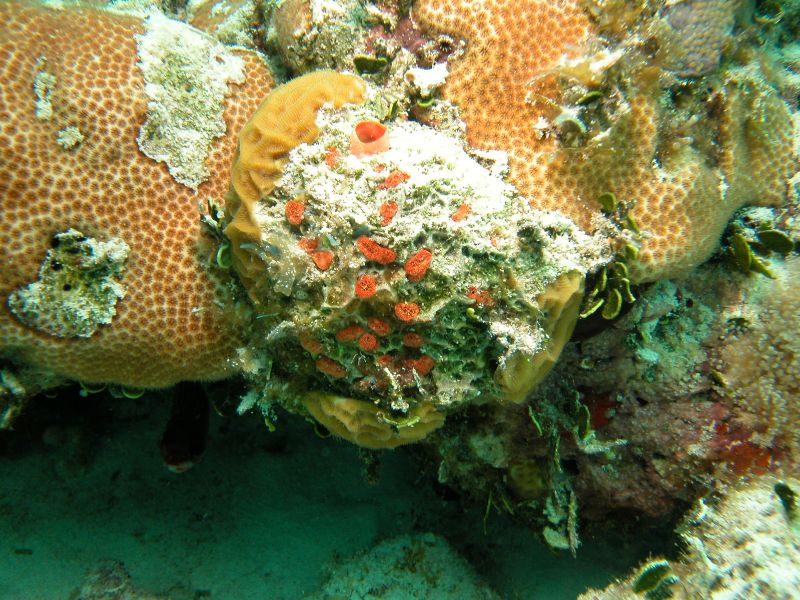
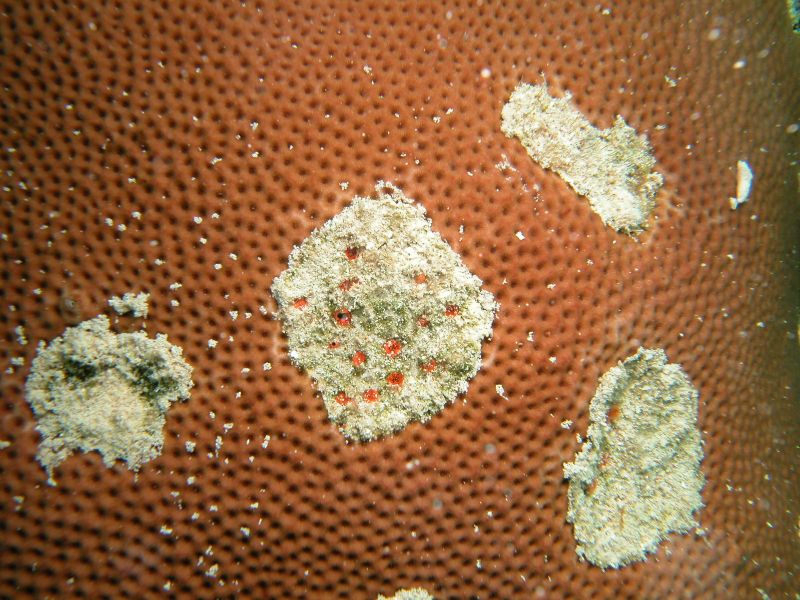
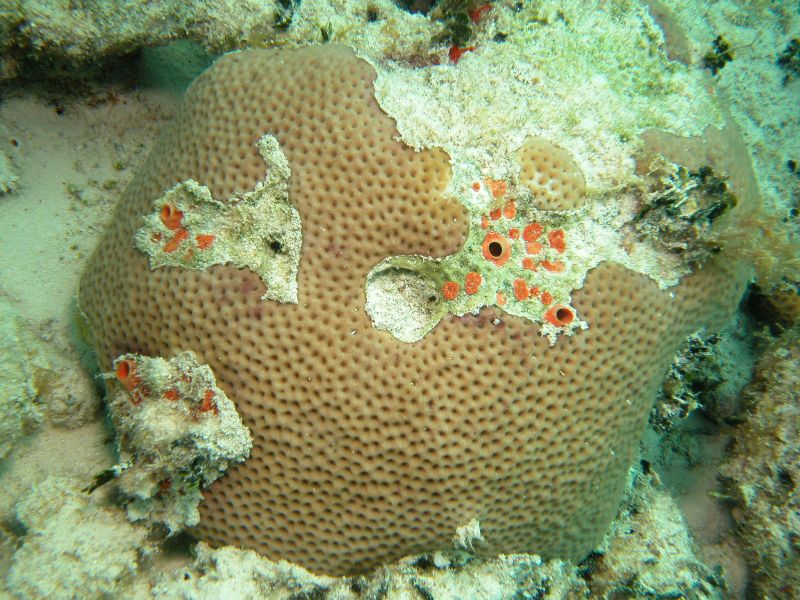
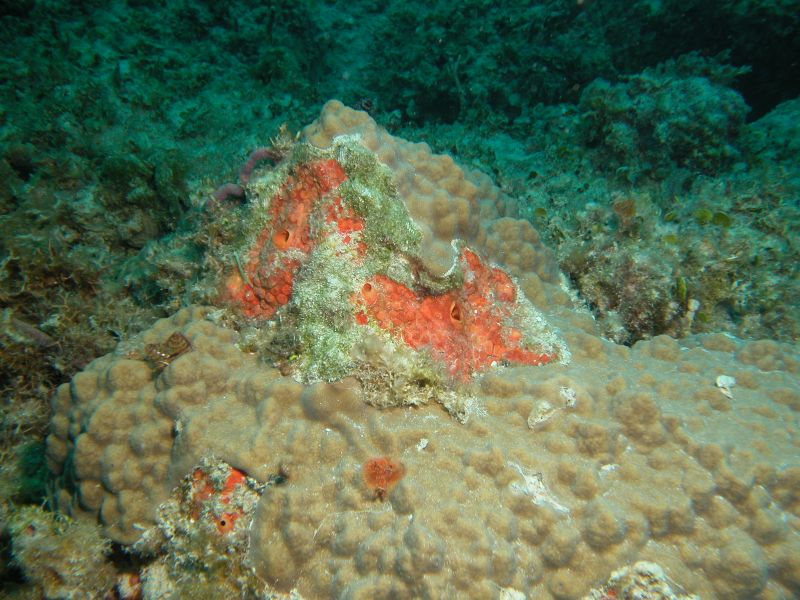
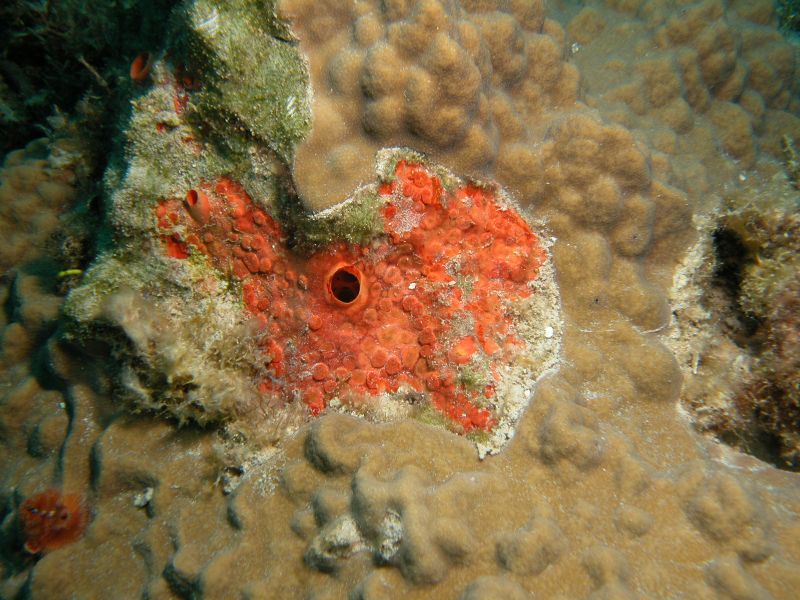
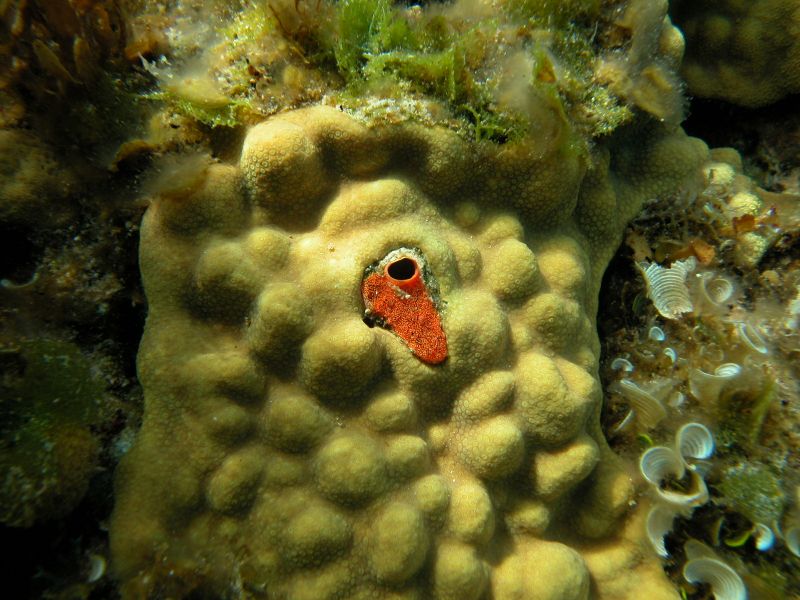

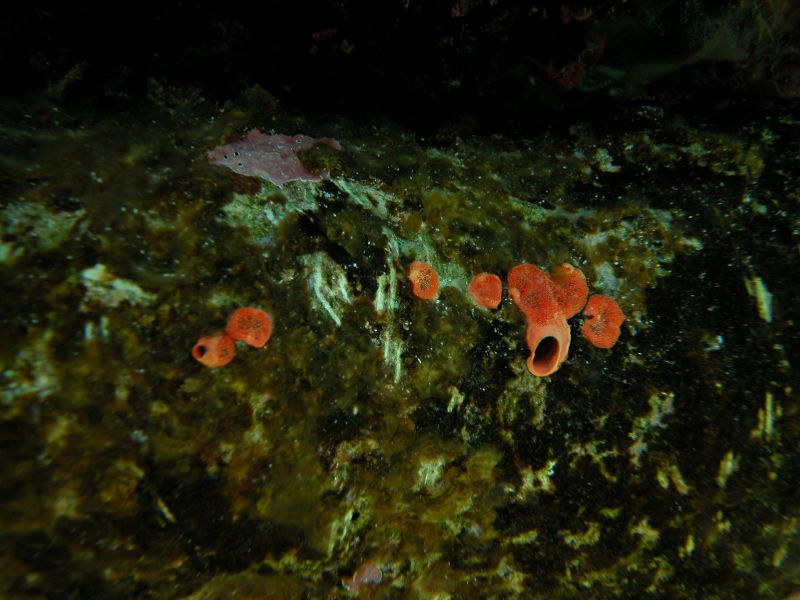
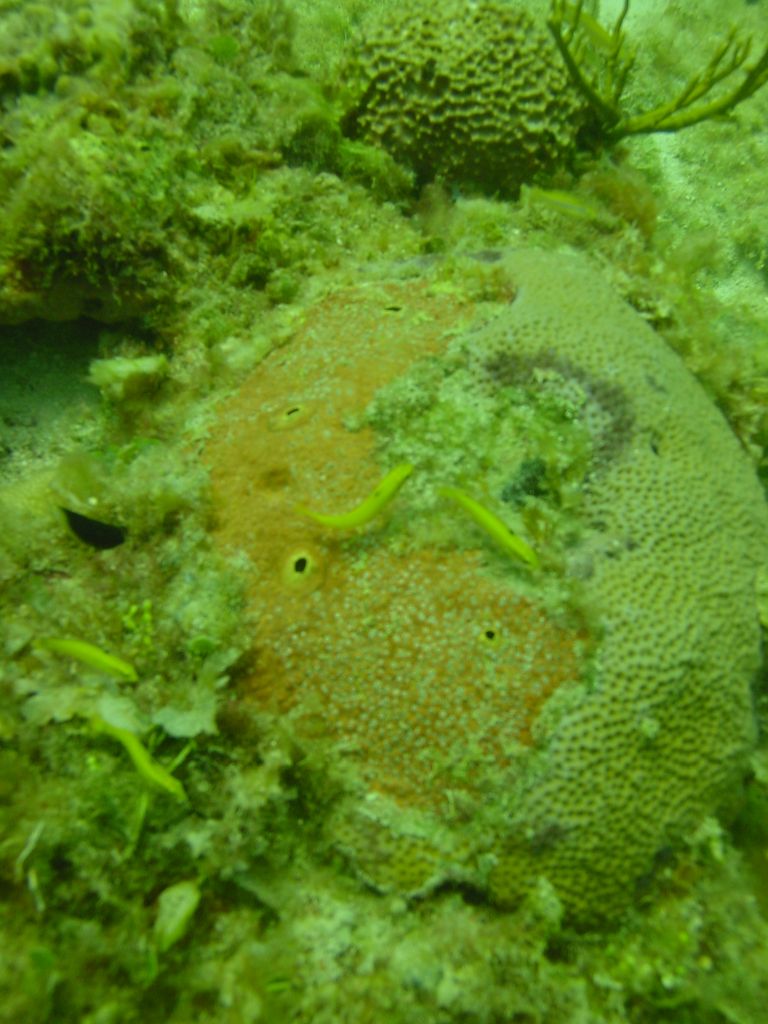
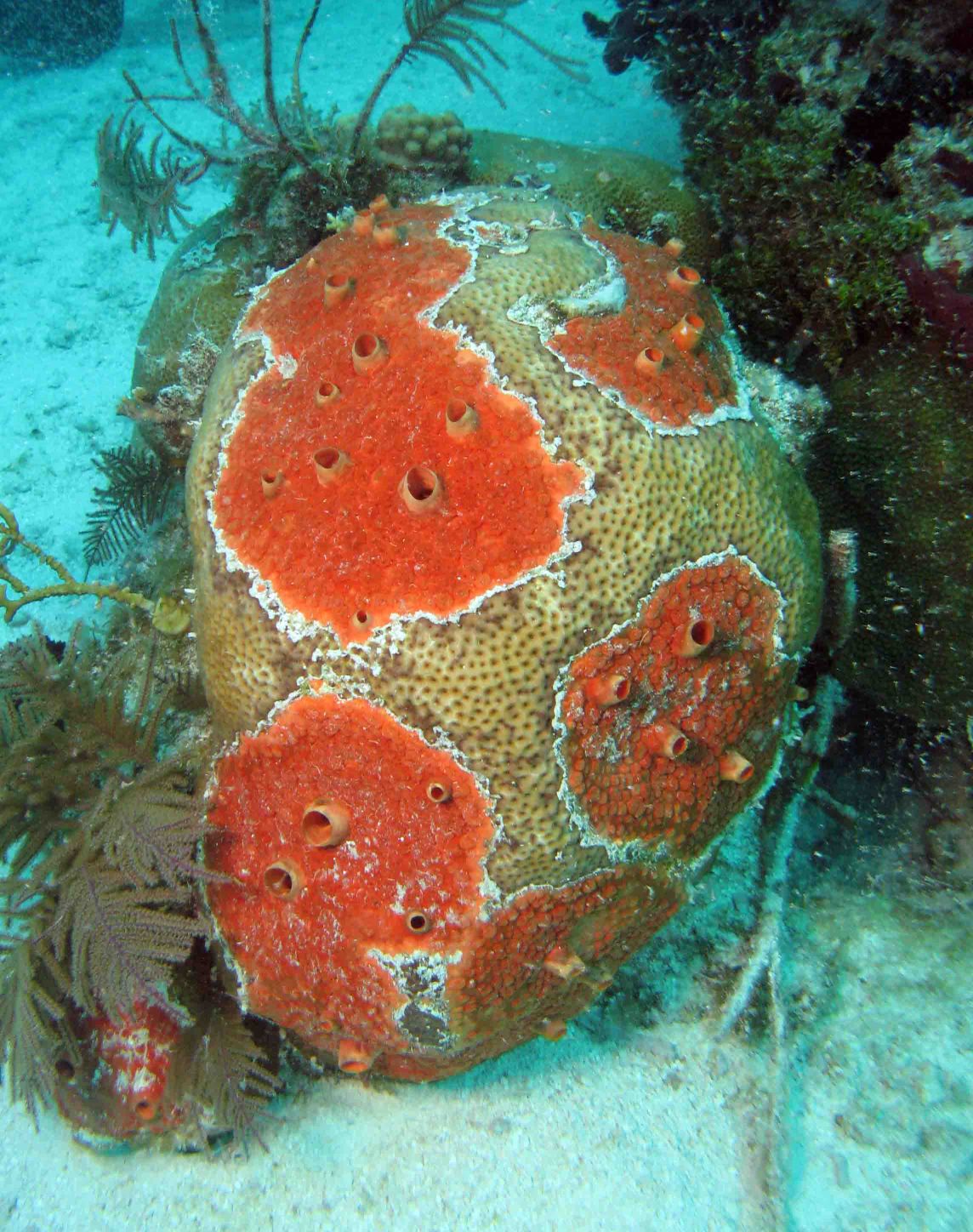
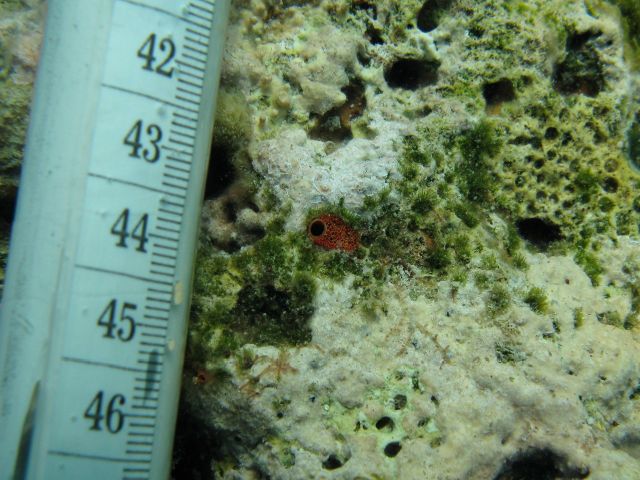

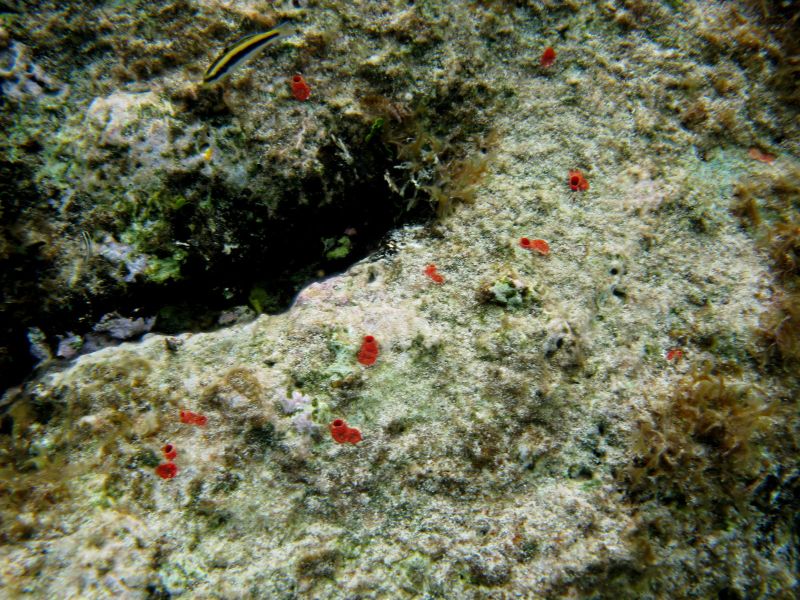
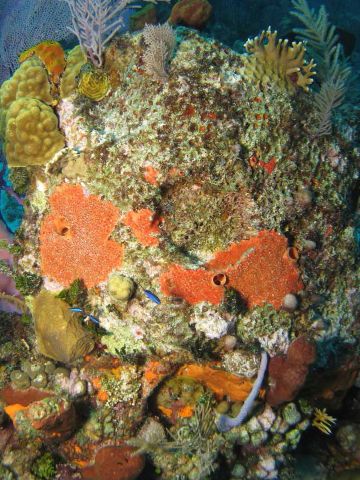
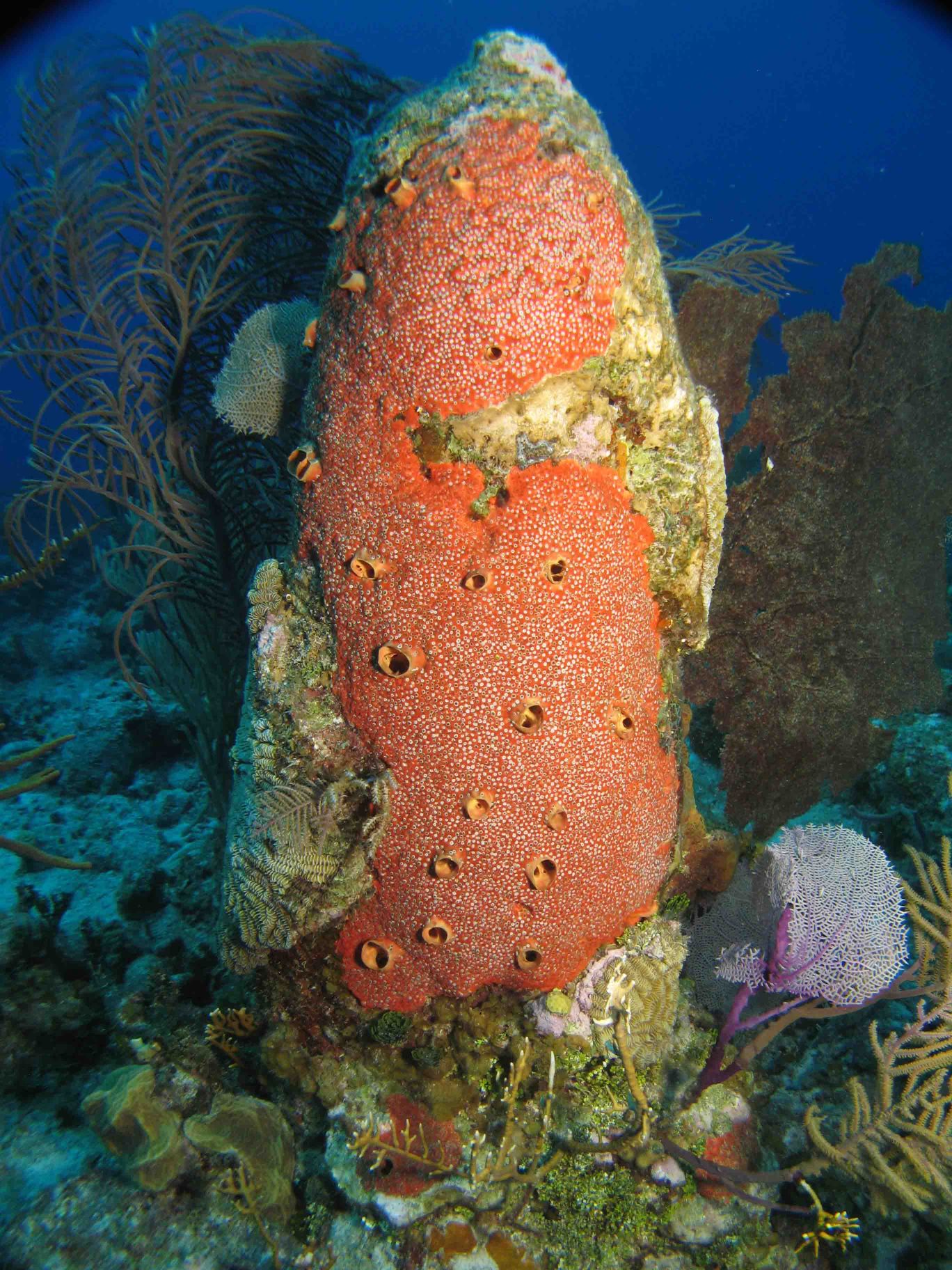
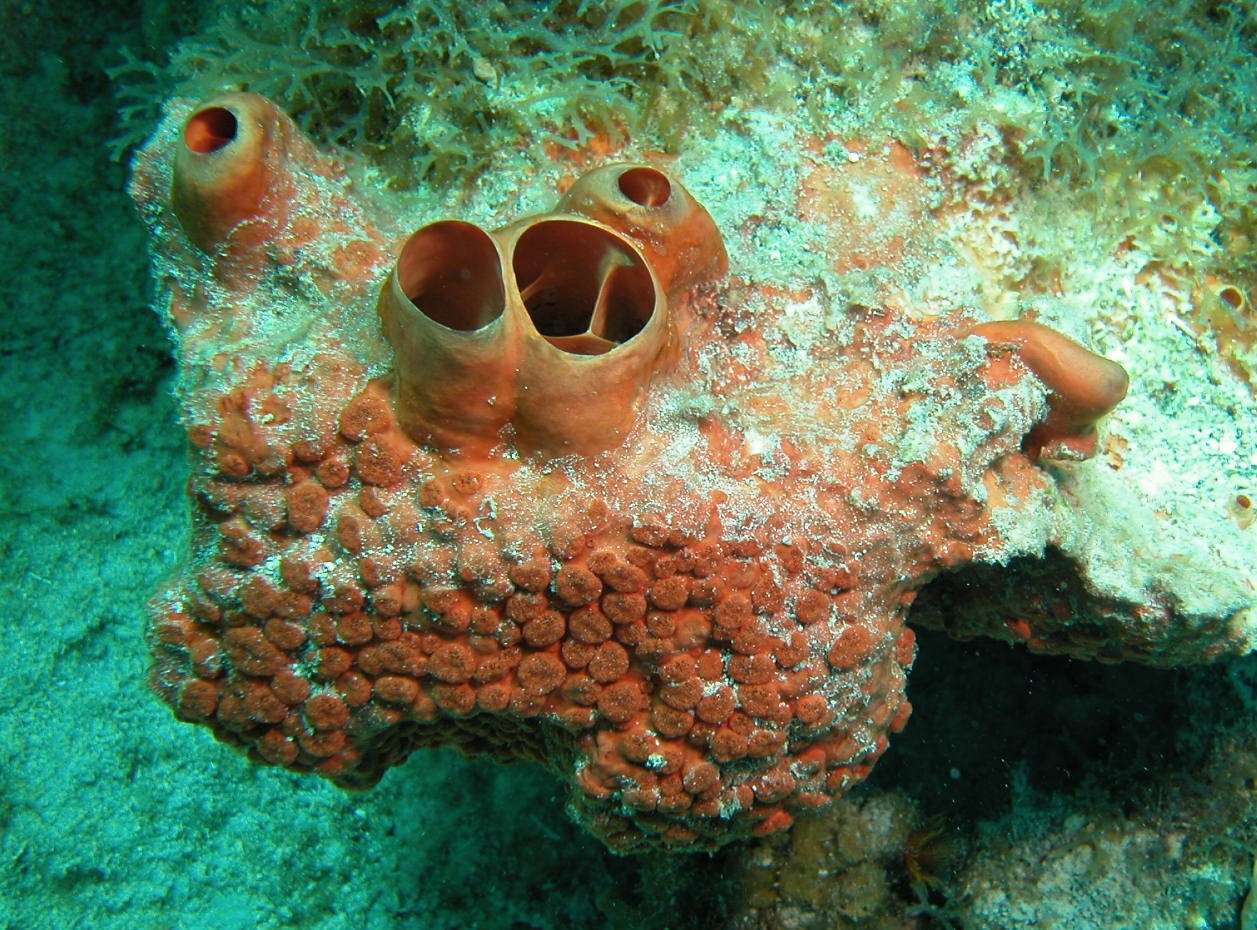
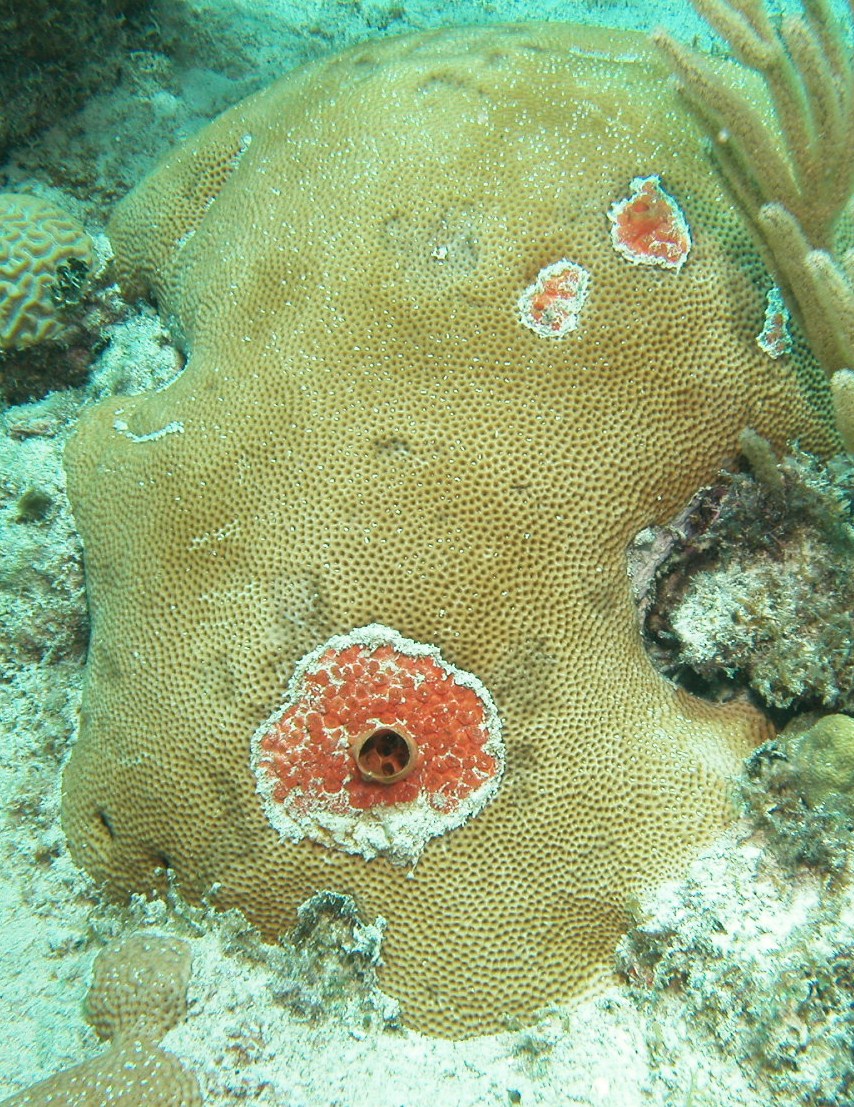
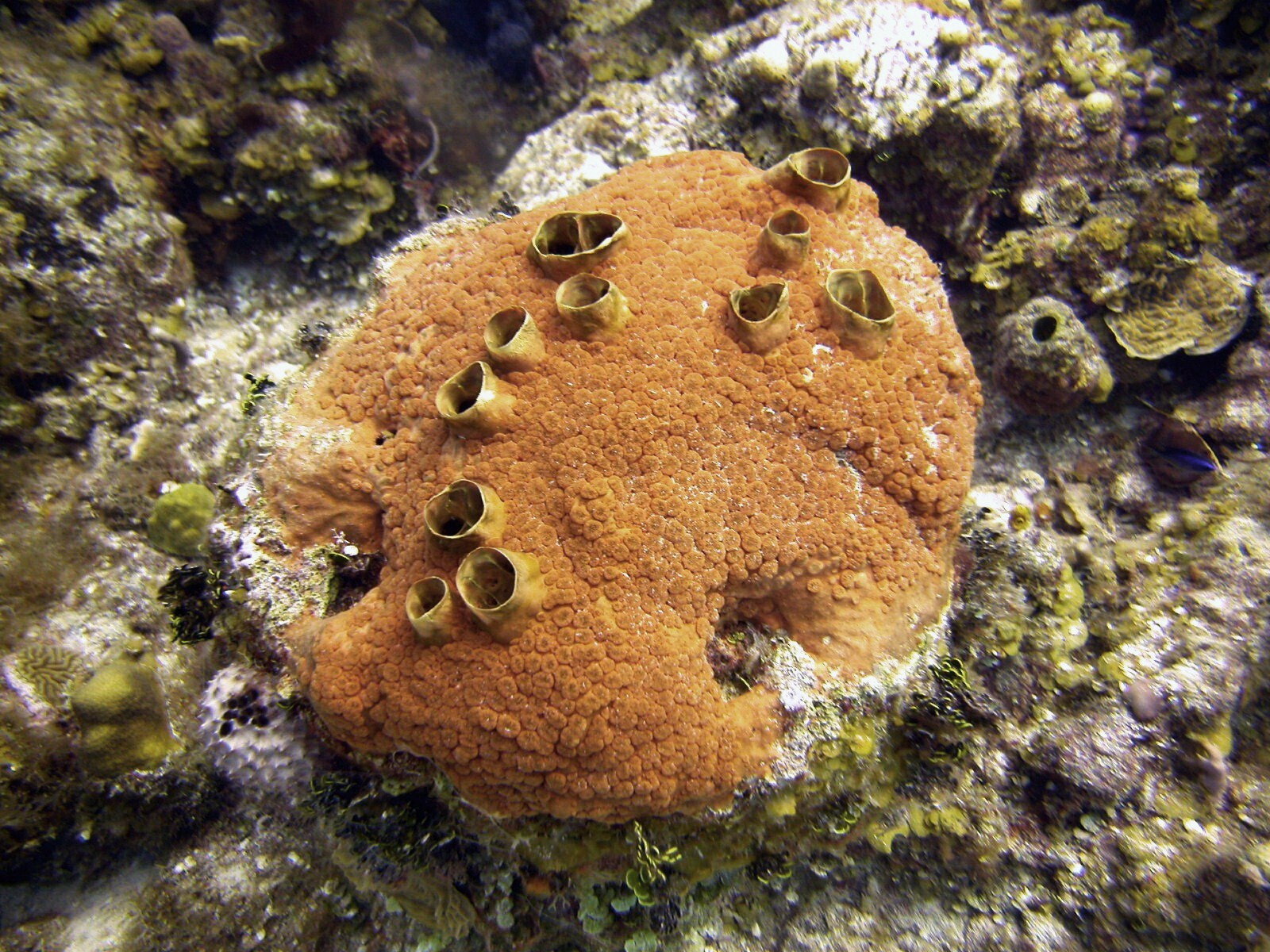
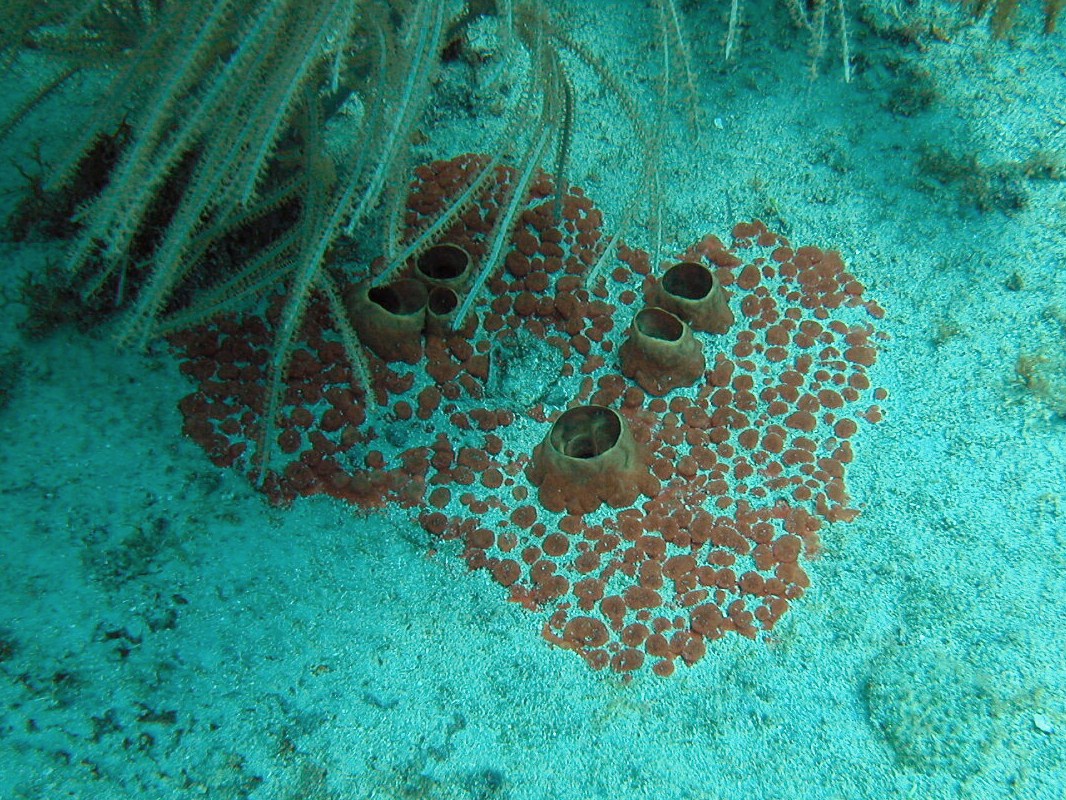
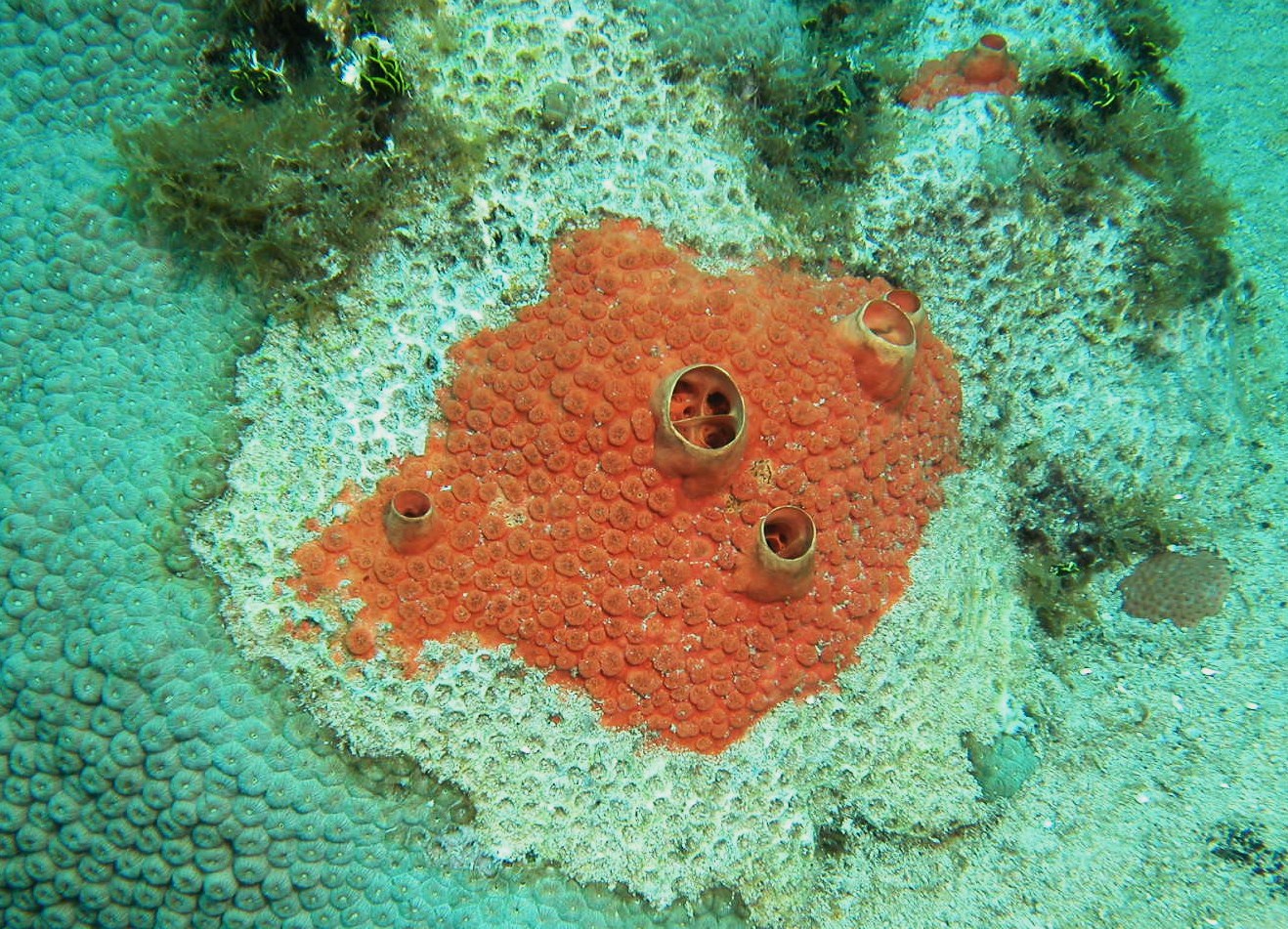
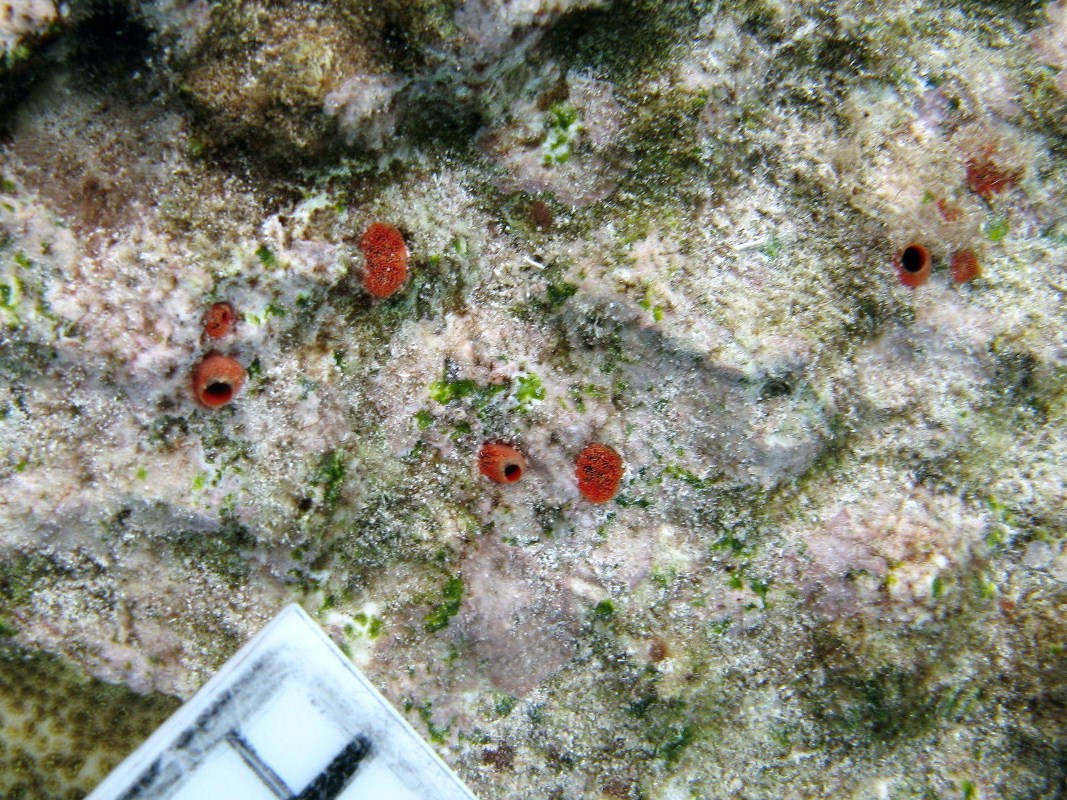
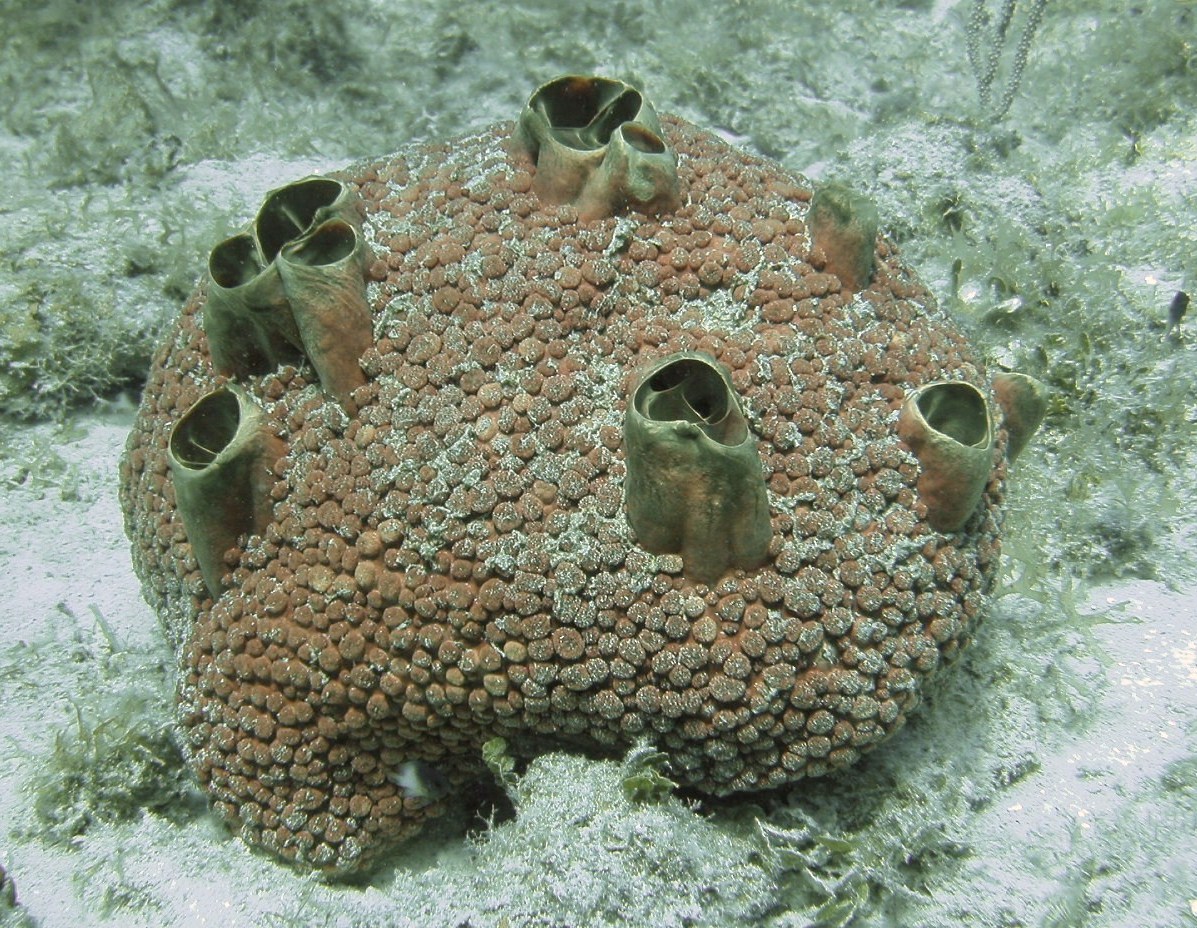
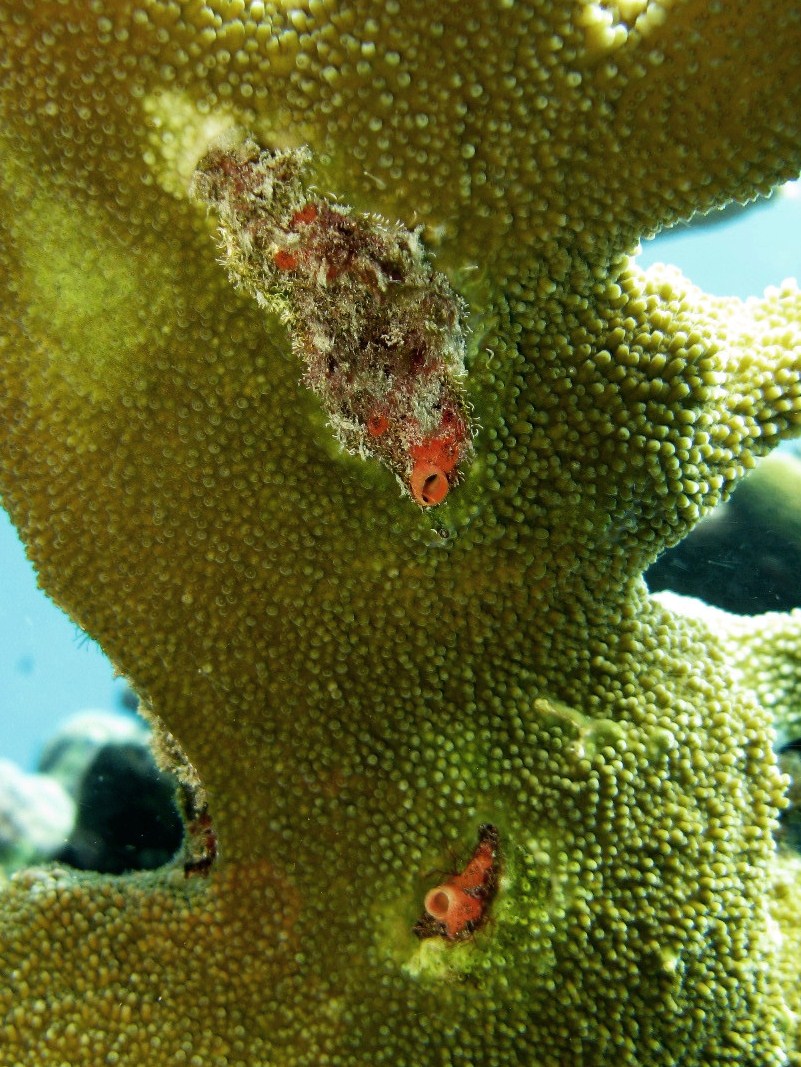
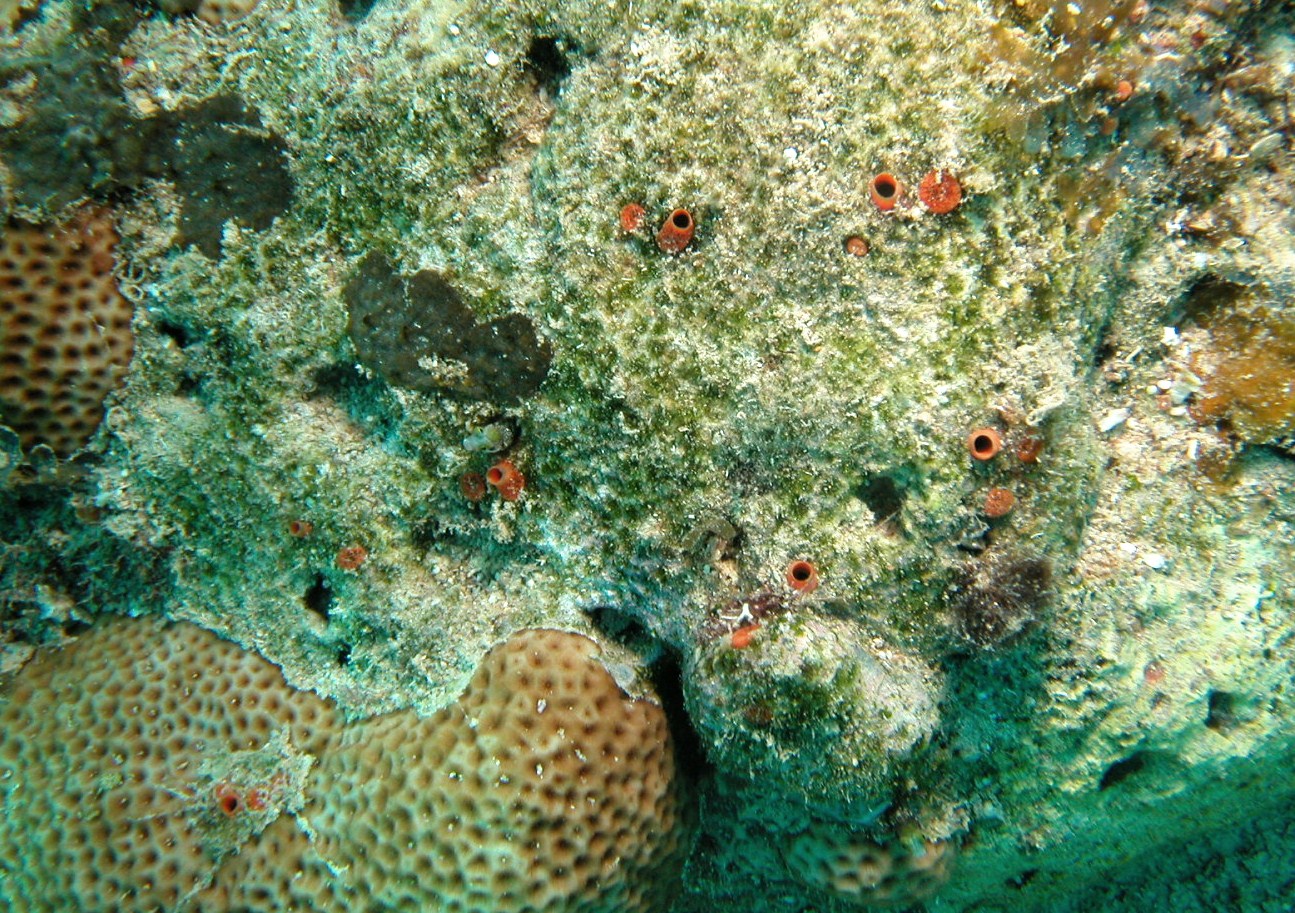
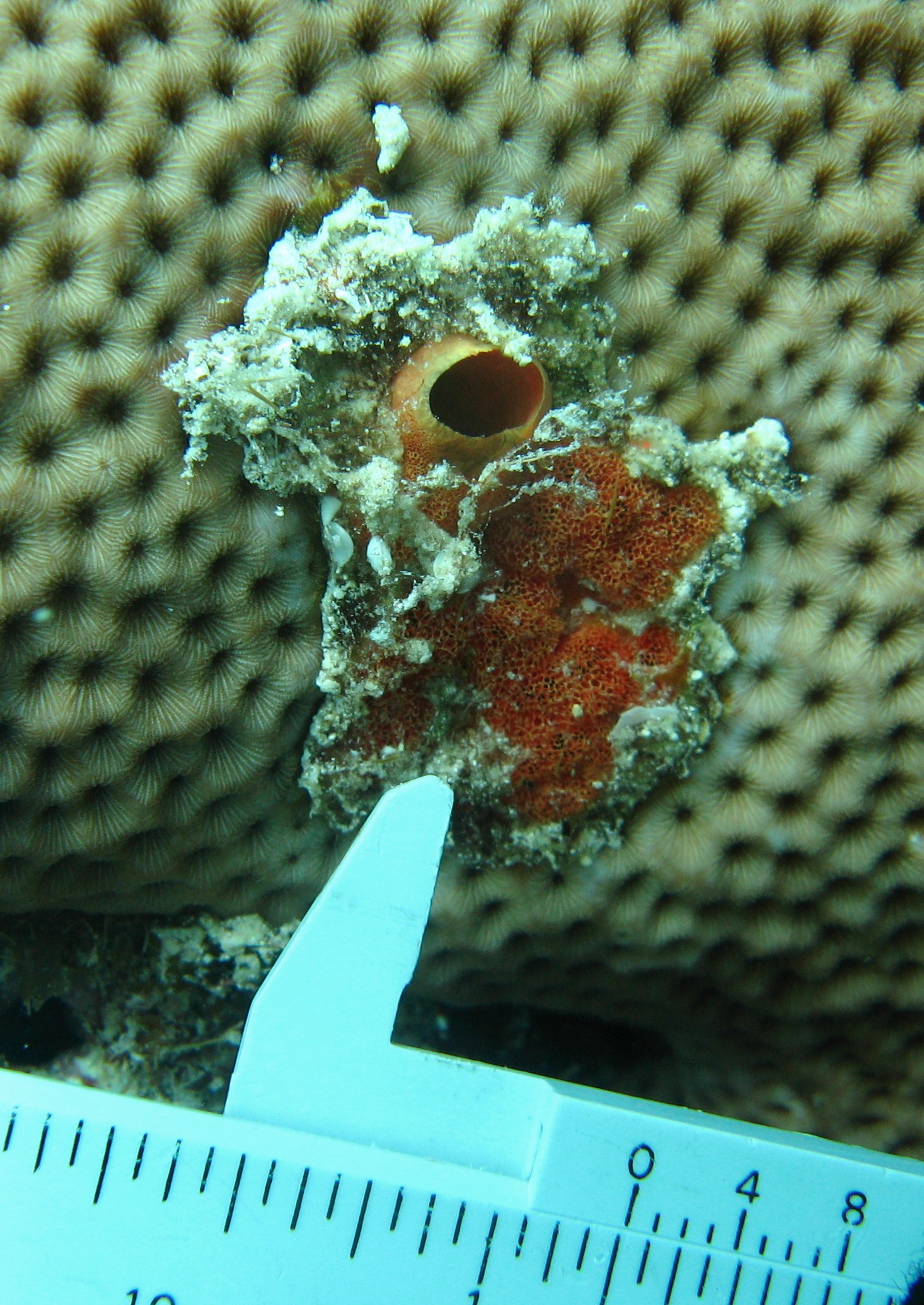
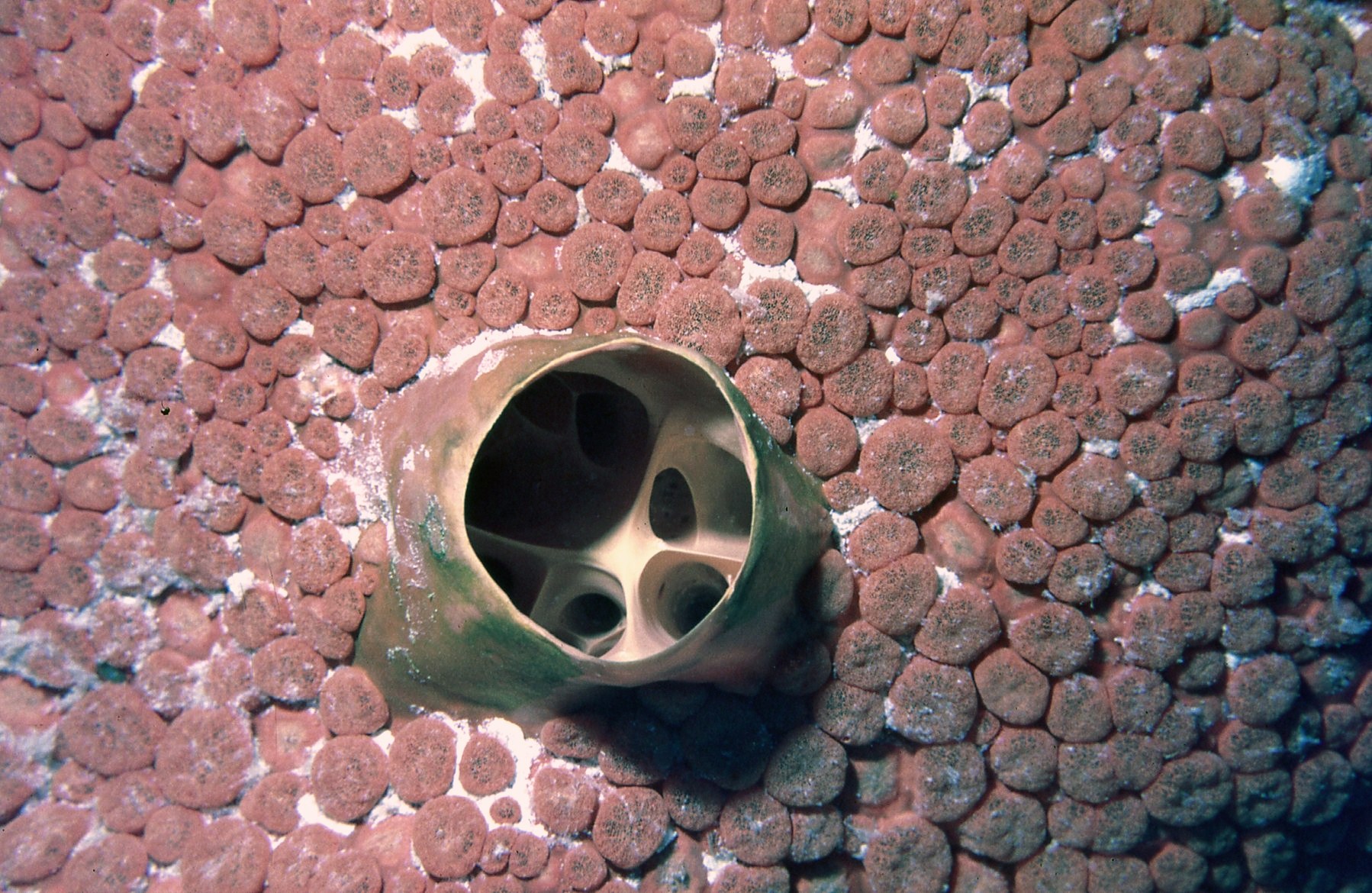


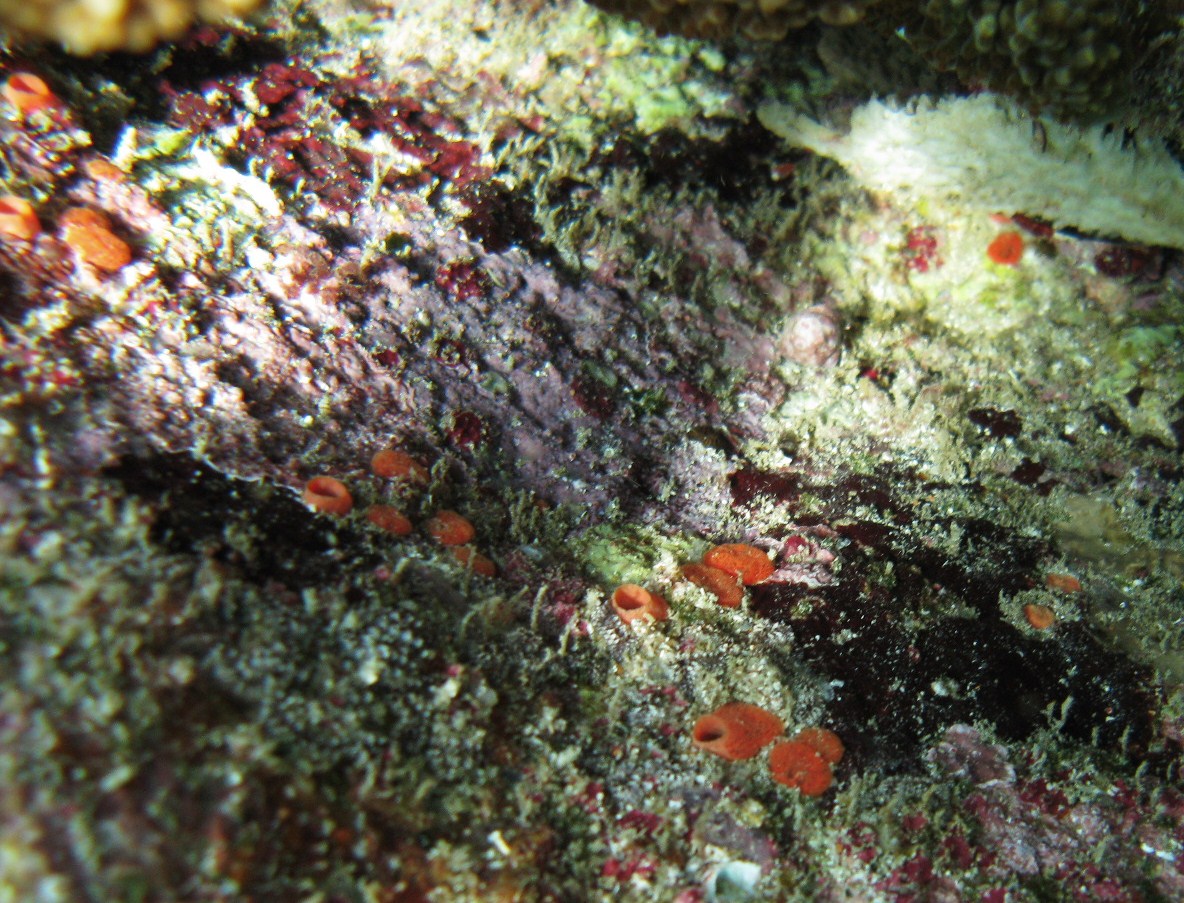
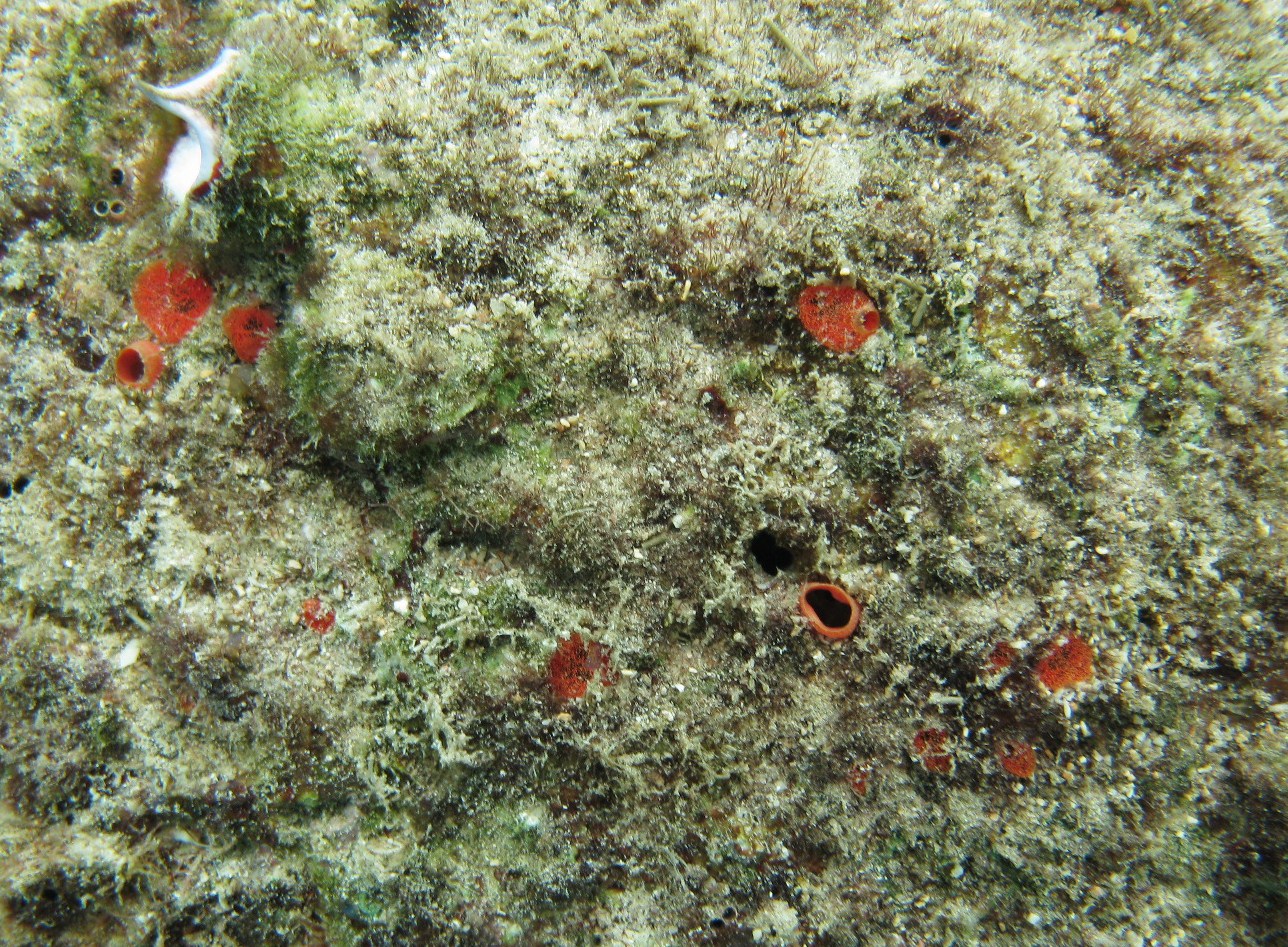
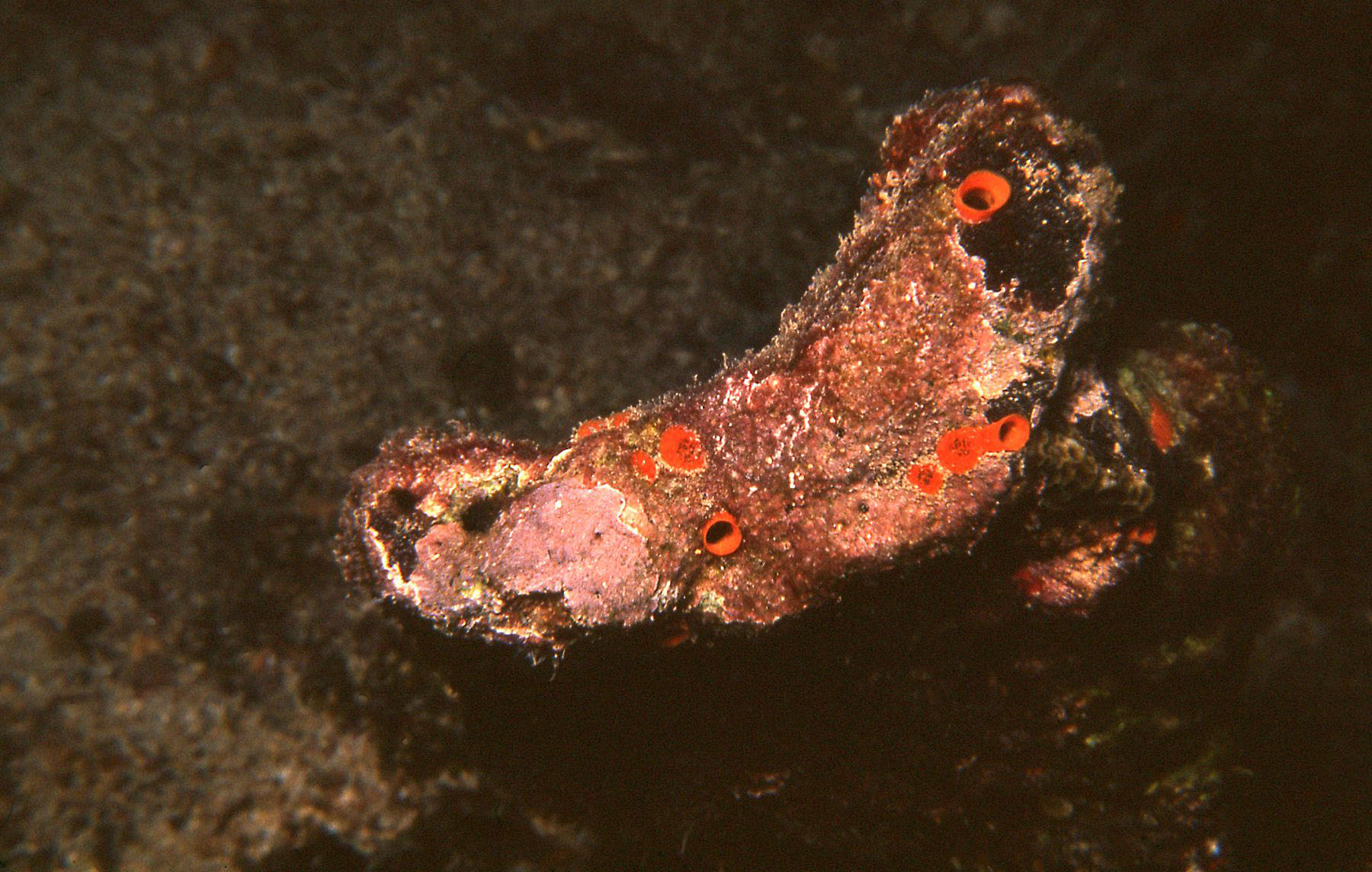



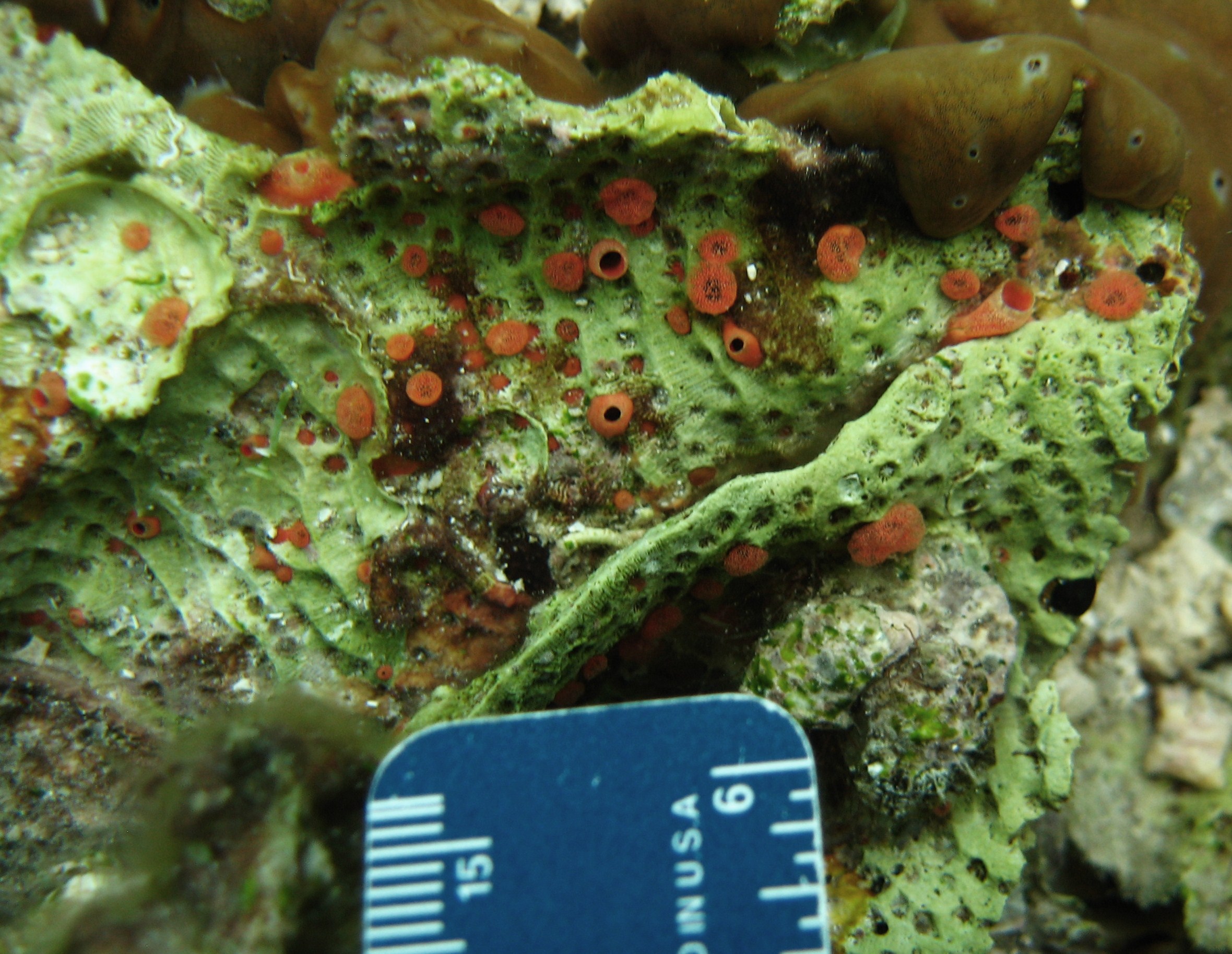
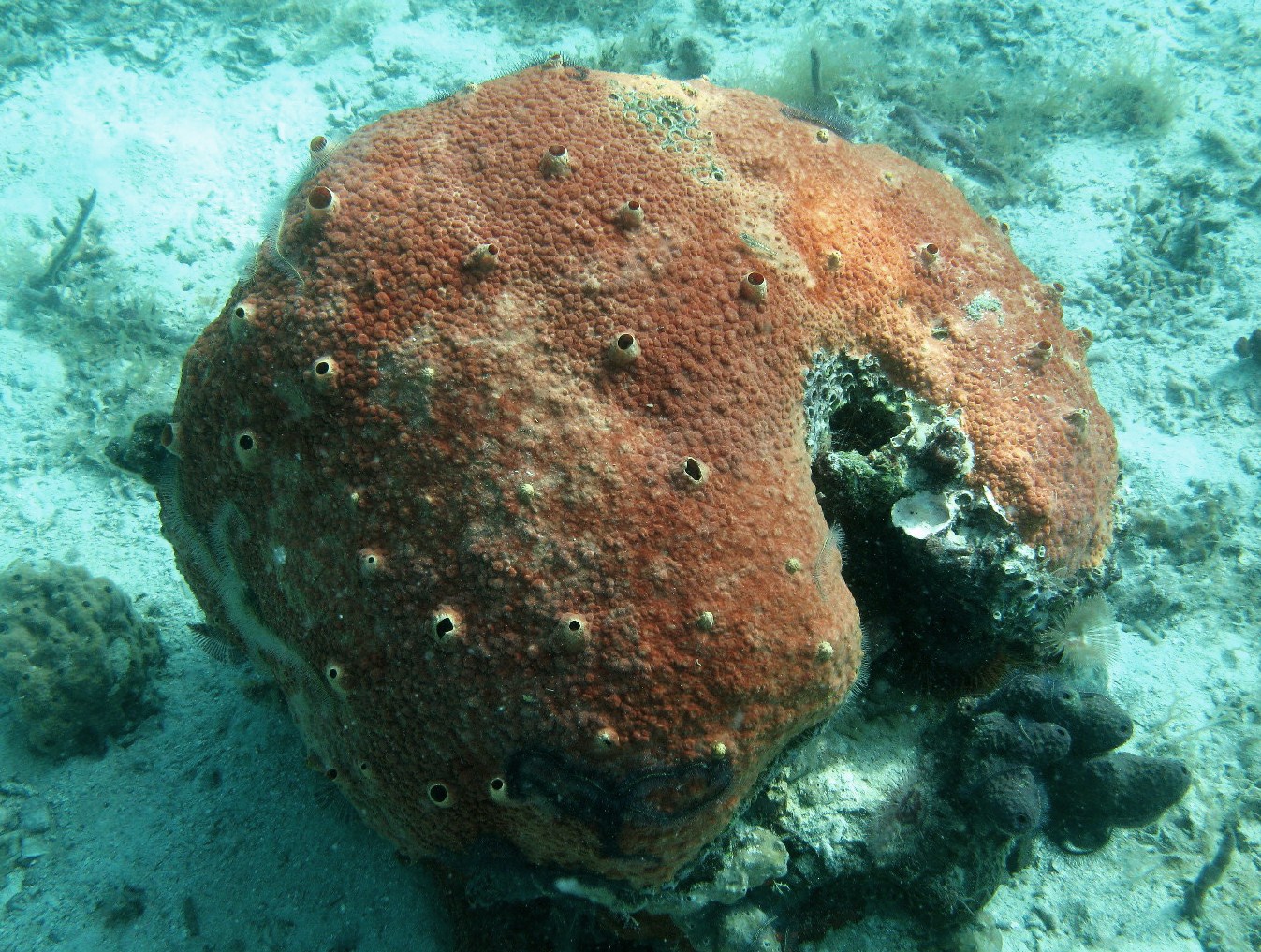
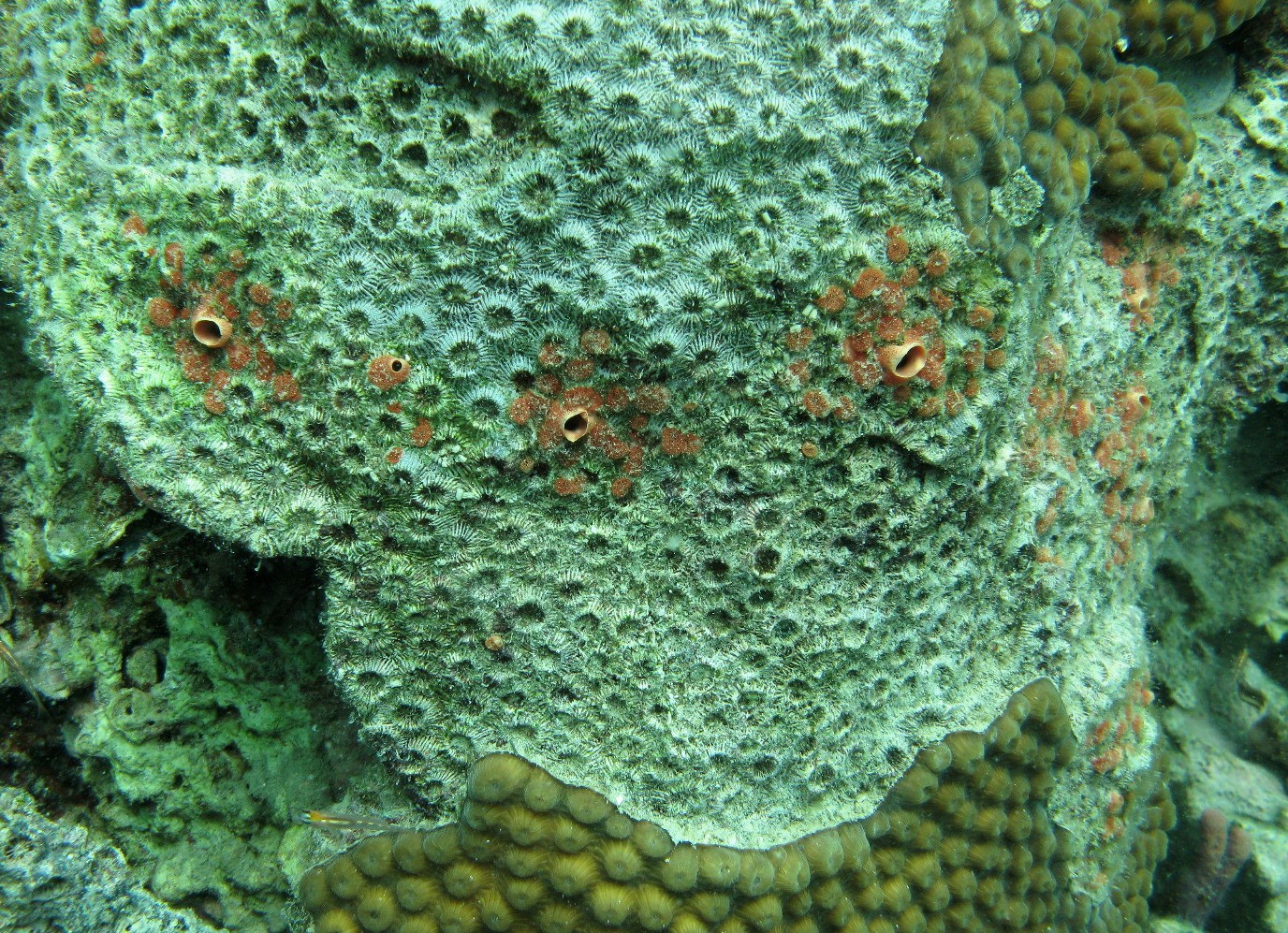

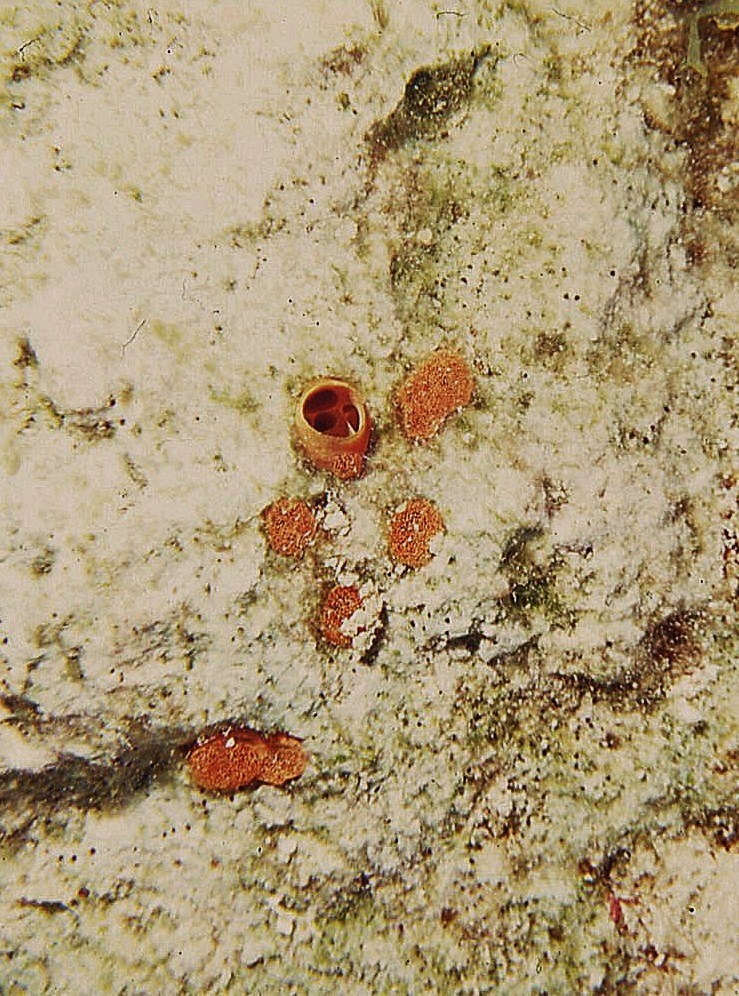
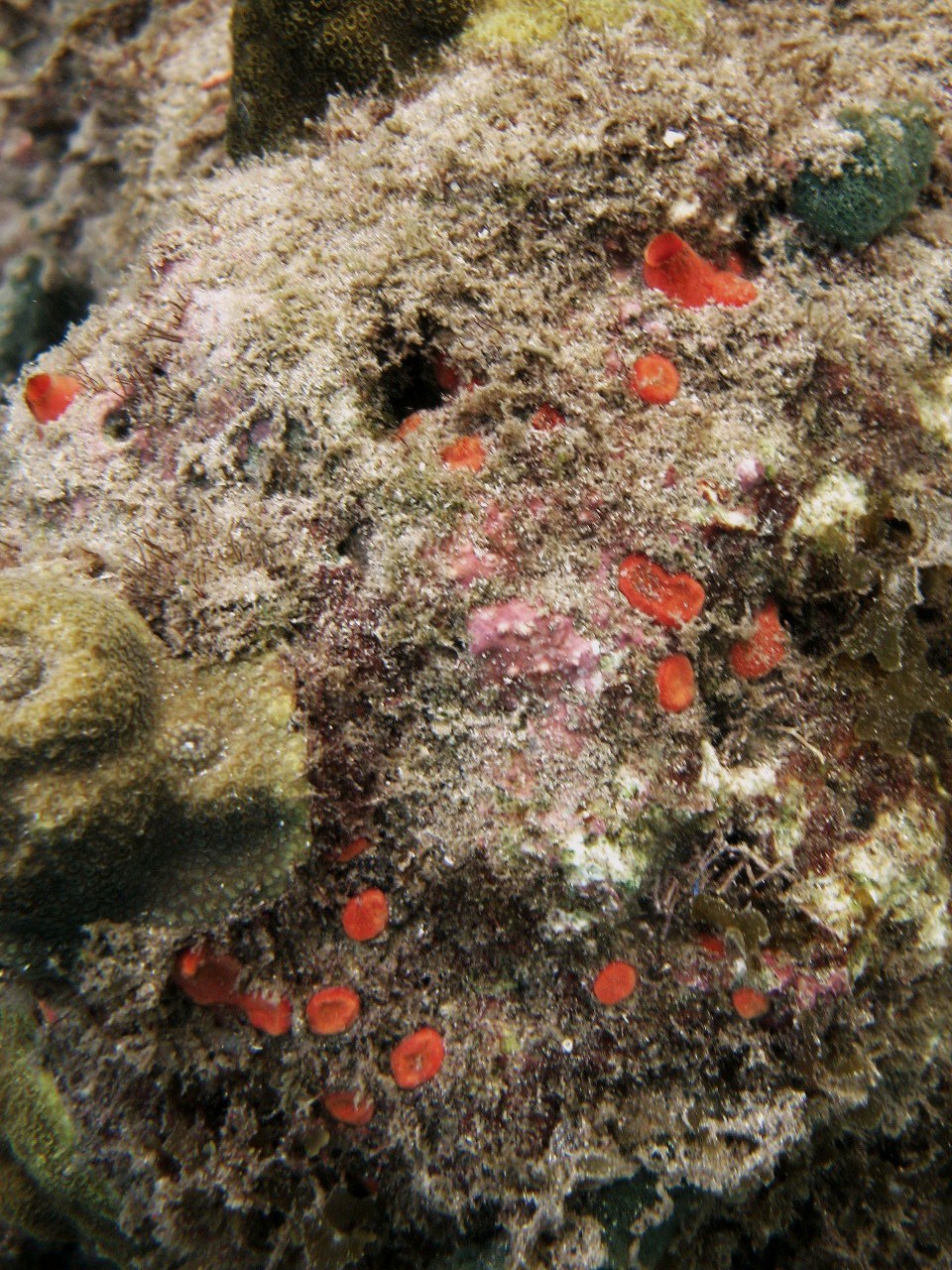
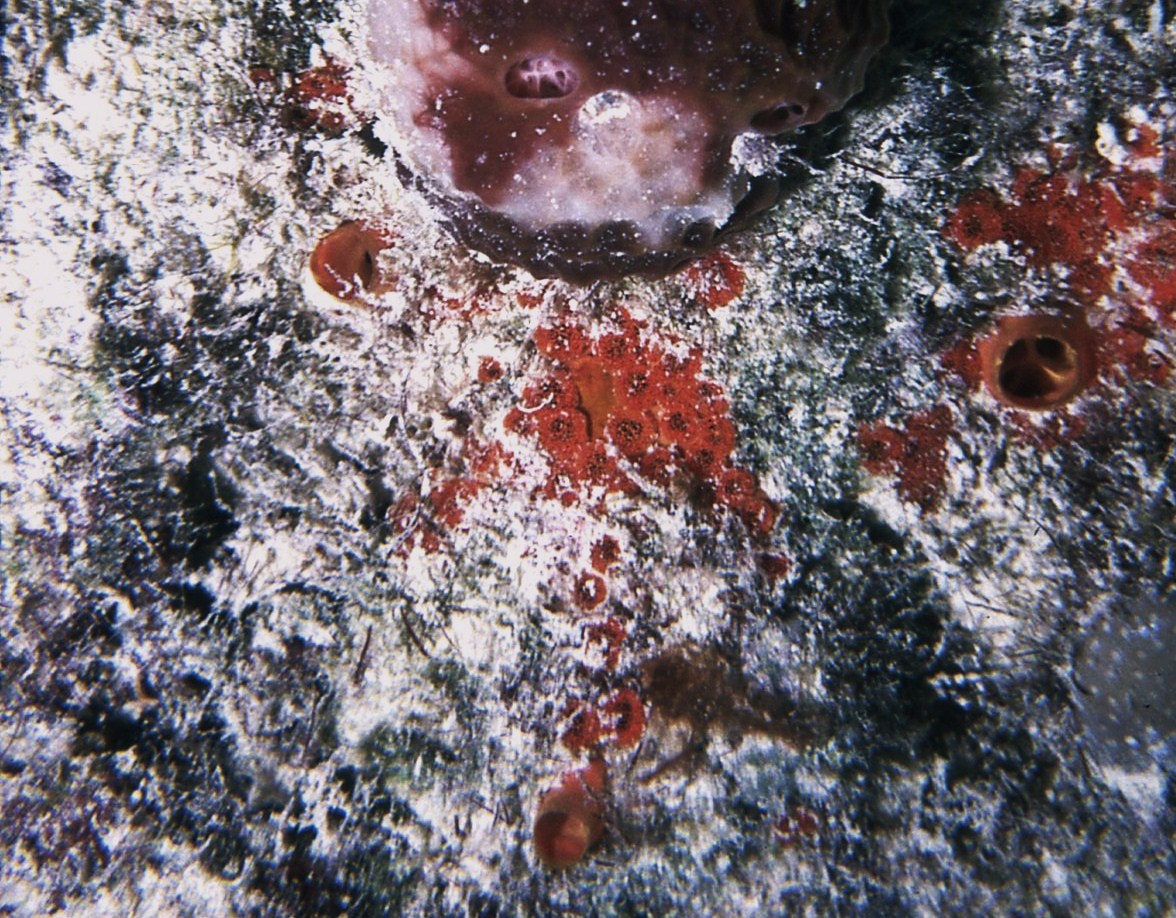
Description: Excavating sponge, papillated or encrusting. Papillated specimens are fields of inhalant and oscular papillae, separated or partly fused, up to 1-1.5 cm in diameter, slightly raised over the excavated surface; inhalant papillae are cylinders topped by a porous roof; oscular papillae are a cylindrical or a conical membrane, usually slightly larger than inhalant papillae. Papillar fields can be from a few to 10 or more cm wide. Encrusting specimens fully cover the excavated substratum, easily reaching 50 cm or more in diameter (depending on the size of the excavated coral). They are usually fringed by a smooth tissue edge about 1-3 cm wide, with the remaining surface covered with elevated papillae (up to 1 cm in diameter), densely packed, and one to several tall and large (up to 5 cm high and 3-5 cm in diameter) conical membranous oscules; the inside of oscules is deeply cavernous. Upon handling, oscules contract although they may not close completely. Surface sometimes riddled with zoanthids. Excavations are deep, reaching 10 or more cm, completely filled with tissue. External color is scarlet red, internal tissue orange; oscular membranes may have a yellow apical band. Consistency slightly tough, cheesy. The skeleton of ectosomal tissue around papillae and over non-excavated portions is made up of a palisade of spicule columns ending in bouquets at the surface; tissue inside excavated galleries and tunnels with free spicules loosely placed in confusion. Megasclere spicules are slender tylostyles, slightly curved, often with subterminal heads and pointed to blunt tips. Size and shape vary geographically, being thinner with very narrow and long heads in island areas (Bahamas, Jamaica, Curaçao, San Andrés) and stouter with more prominent heads in continental locations (Colombia, Panama). Sizes (island vs. continental) as follows: length 110-410 µm vs. 163-460 µm, width 2.0-13.8 µm vs. 2.4-23.5 µm, head length 3.0-25.0 µm vs. 4.8-21.6 µm, head width 2.5-14.0 µm vs. 4.8-20.3 µm. Microsclere spicules are present only in Panama and continental Colombian locations, and not in all specimens, in two types: (1) stout, hypersilicified (nodulose) spirasters/amphiasters with 1-2 turns and low conical and blunt spines, single or divided, 22.6-27.0 µm long and 10.0-13.9 µm wide (including spines; an axis which could be measured was 6.5 µm wide); (2) rods, characteristically bent in the middle; with numerous to sparse spines, often divided, arranged in an erratic spiral around the rod, producing in the rod an overall look of an unscrewed spiraster; size 31-70 µm long, with a shaft 2.2-4.6 µm wide (not including spines); Santa Marta rods only with a few spines.
Notes: This is an open, shallow to deep reef species. de Voogd et al. (2024) in the World Porifera Database (WPD) transferred this species from the genus Cliona to the genus Cliothosa Topsent, 1905, based on the conference report by Chaves-Fonnegra et al. (2017) of the presence in some specimens of nodulose spirasters/amphiasters typical of the genus. In the original paper, Pang (1973) described two separate species, the fully encrusting Cliona delitrix and the papillated Cliona laticavicola. Chaves-Fonnegra et al. (2017) argued that C. laticavicola is an ecophenotype and an ontogenetic stage of C. delitrix, a suggestion followed by de Voogd et al. (2024, WPD) and that we have followed here too. The finding in both forms of the same microsclere complement, not previously recorded in these species, reinforced Chaves-Fonnegra et al. (2017) conclusion. With A. Chaves-Fonnegra and other authors, we have been comparing spicular morphology and size in papillated and encrusting specimens throughout the Caribbean and, together with molecular evidence, we are concluding preliminary that they are either developmental or ecological variants of the same species, perhaps in the process of species separation. These results will be published elsewhere. Papillar specimens are common in shallow rocky and reef locations, often on the lower, cryptic part of branching or foliose corals; they are less common in deeper waters. In contrast, encrusting specimens are rarely found in shallow locations (< 3 m in depth). Interestingly, in the continental coast of Colombia and Curaçao, and in some separated localities in the Bahamas, there exist only papillated specimens, usually in shallow reefs and rocky shores. There are other scarlet to orange excavating species pictured here which could be confused with C. delitrix. Papillated Cliona aff. janitrix Topsent, 1932, is also red orange, but has larger tylostyles (comparing similar localities) with the pointed ends particularly ragged. In fact, some specimens from the Bahamas growing on hard substratum covered by sand, which were placed under C. delitrix in the third edition of this guide, have now been moved to C. aff. janitrix. Also similar is papillated Cliona peponaca Pang, 1973, pumpkin orange in color, with papillae flushed with the surface, smaller and stouter tylostyles, and lacking spirasters. Encrusting specimens can be confused with C. dioryssa (de Laubenfels, 1950), which differs in not having evident papillae over the smooth encrusting surface, tylostyles with drop-shaped heads, and stout and spiny spirasters.
Author Reference: (Pang, 1973)
Link: World Porifera Database
